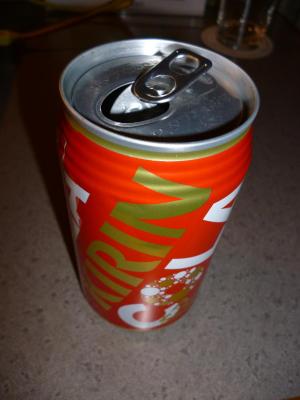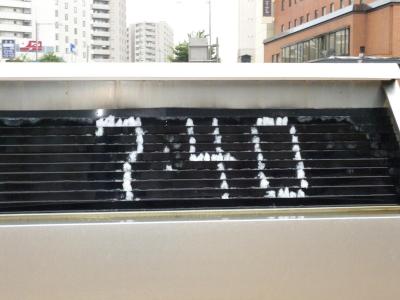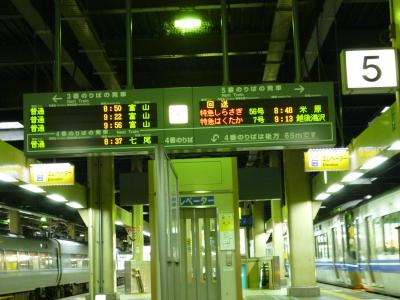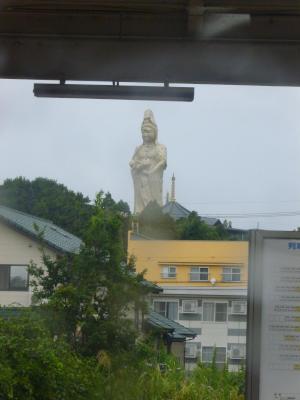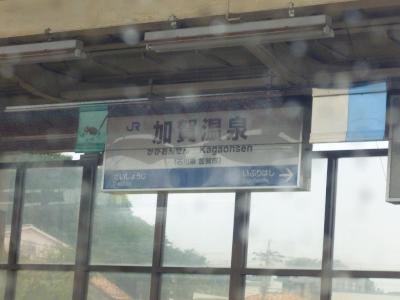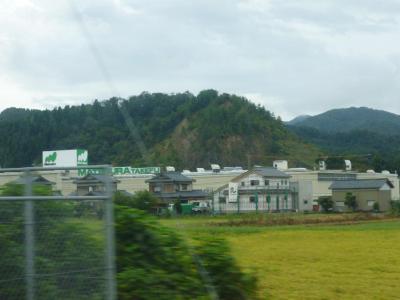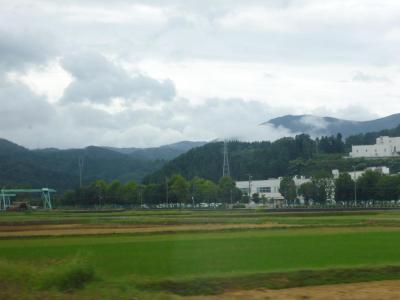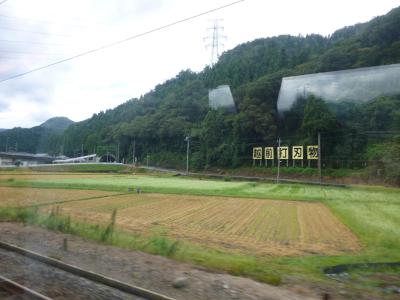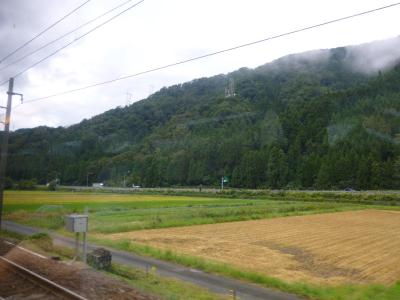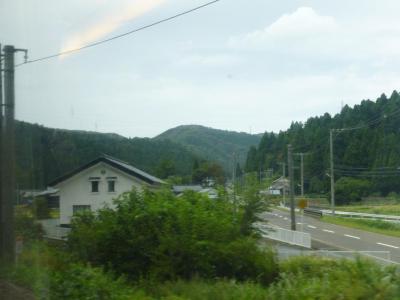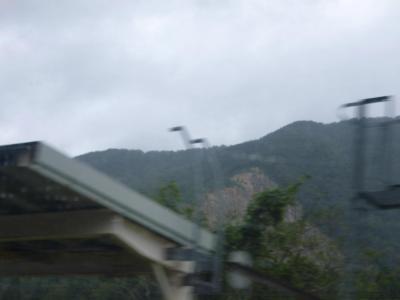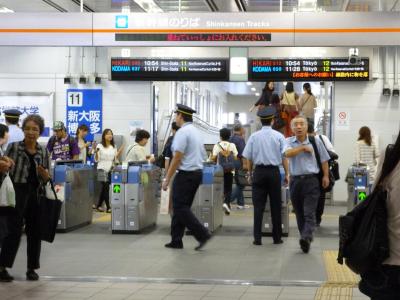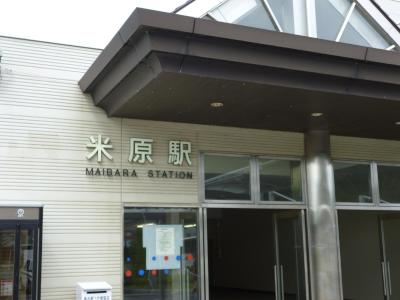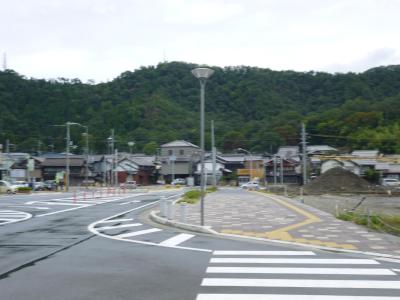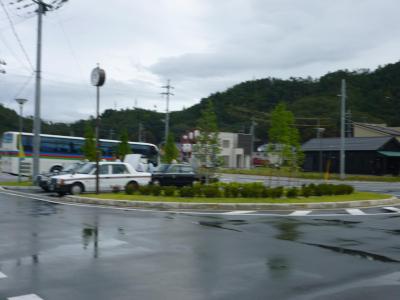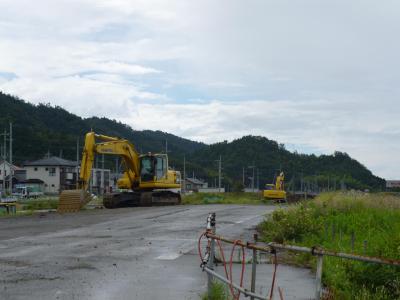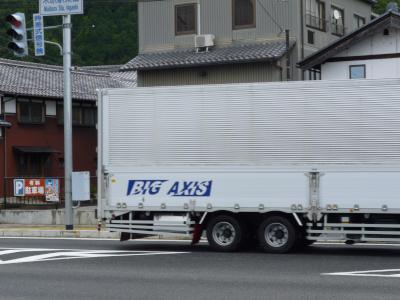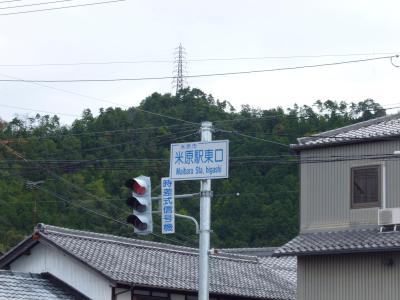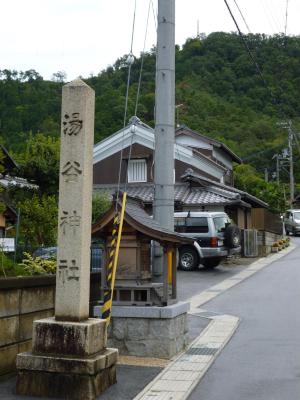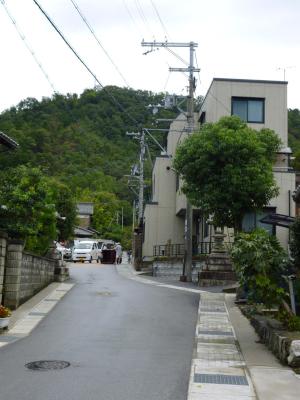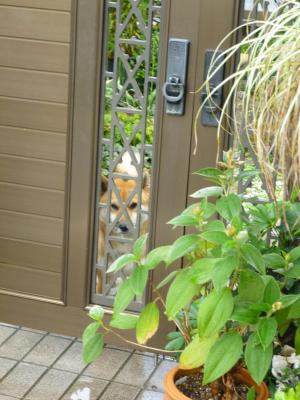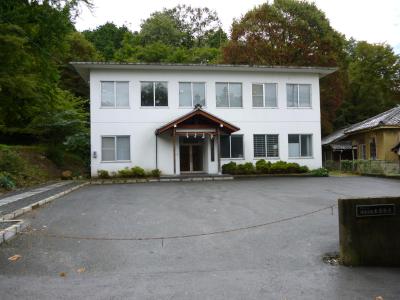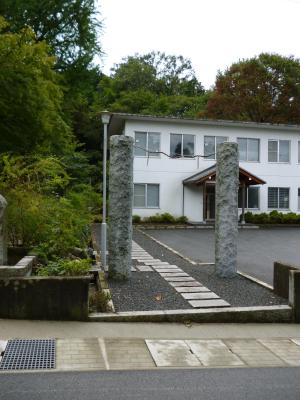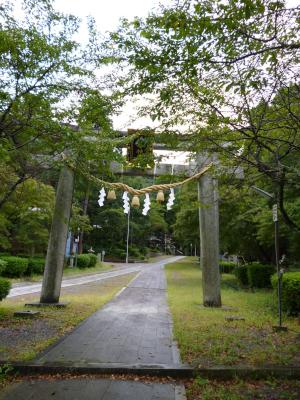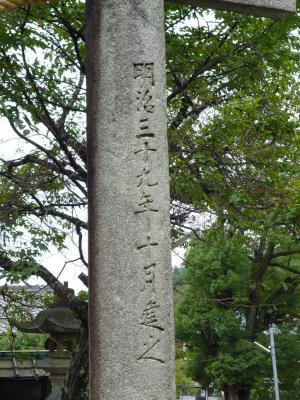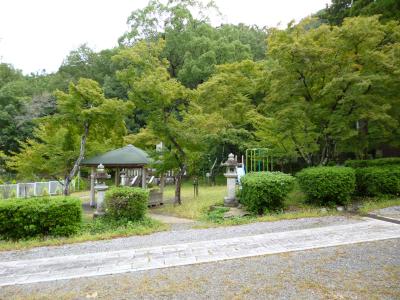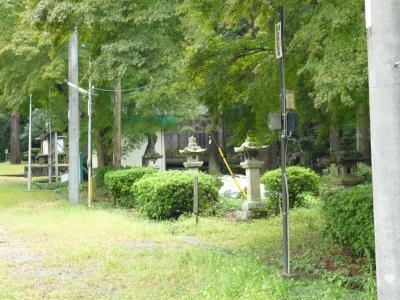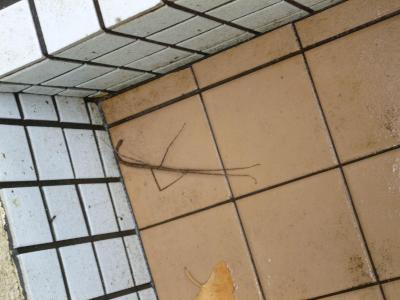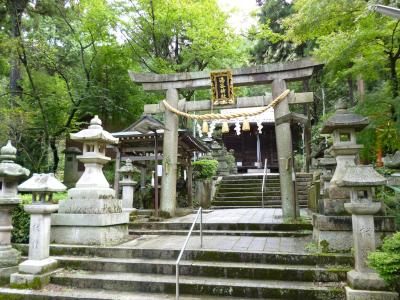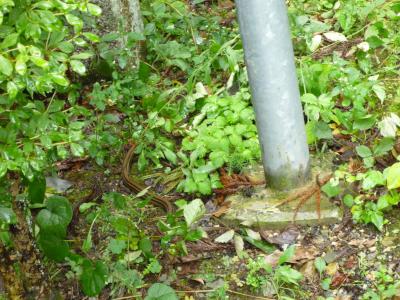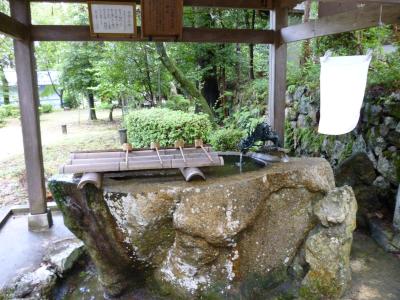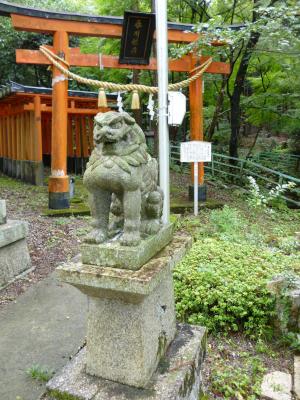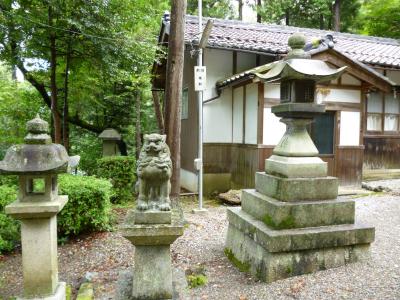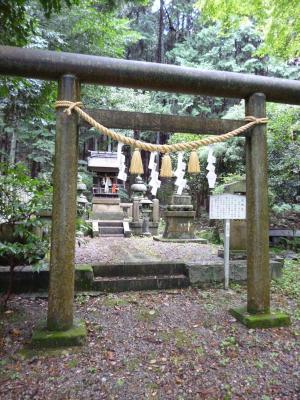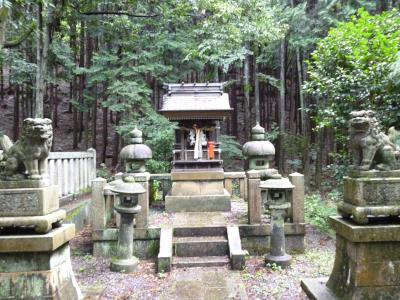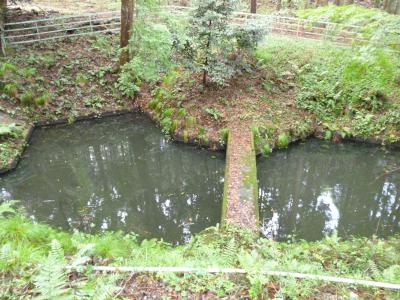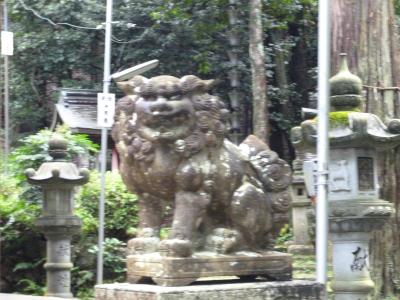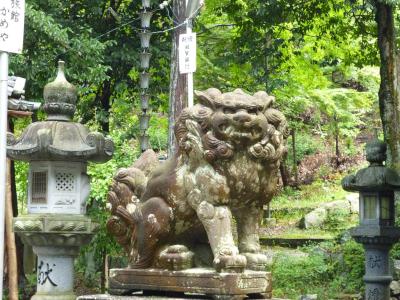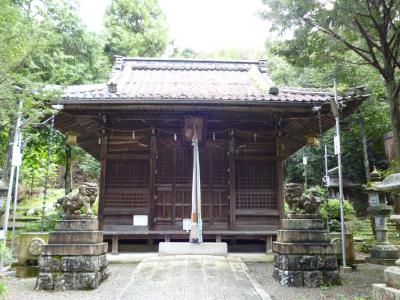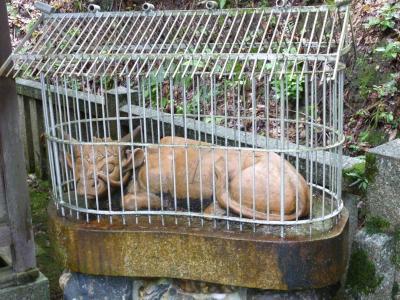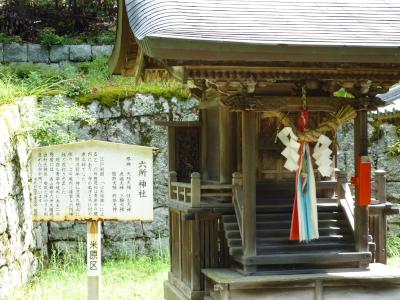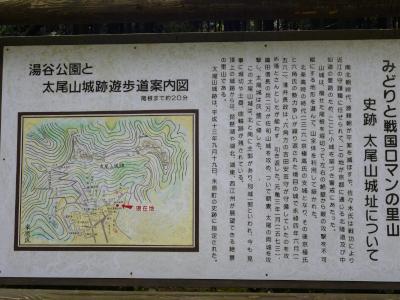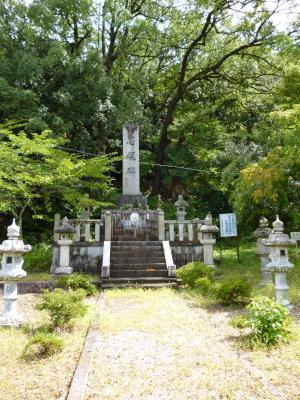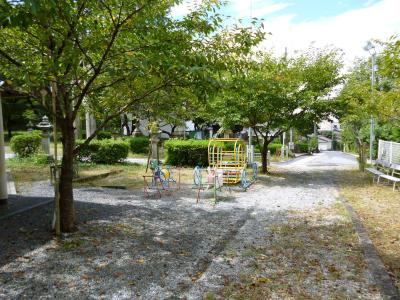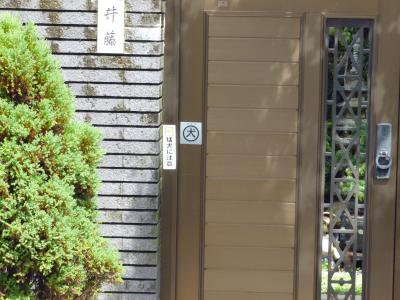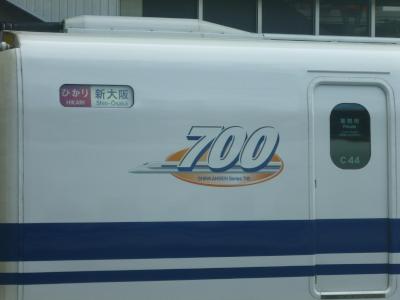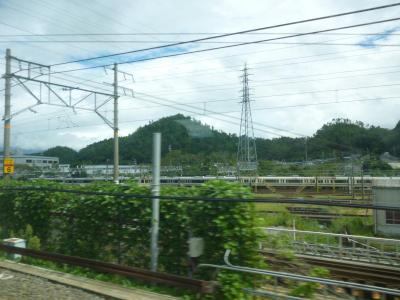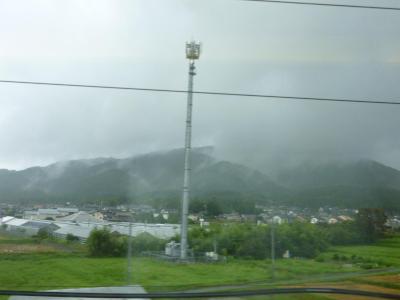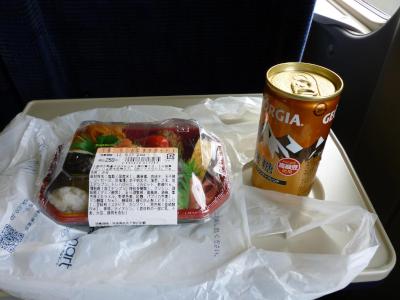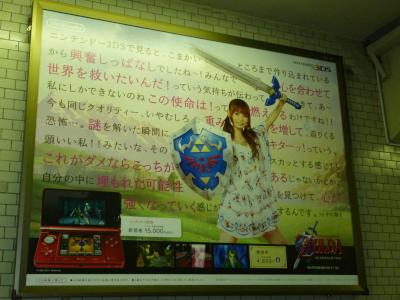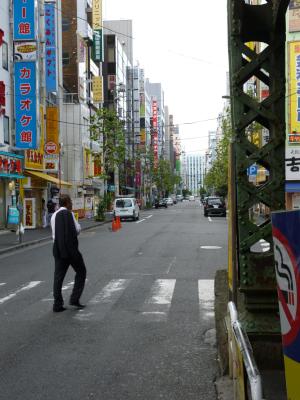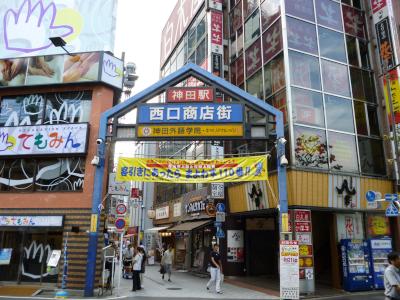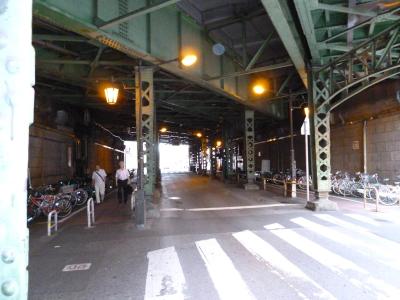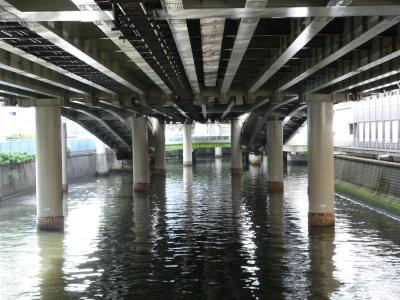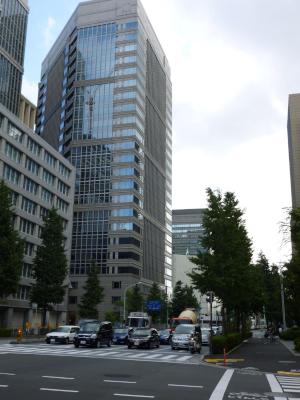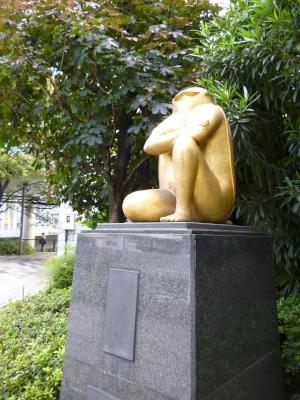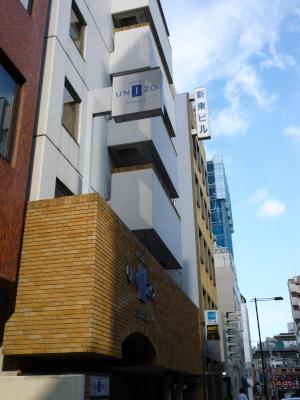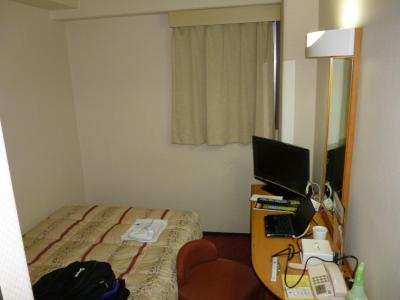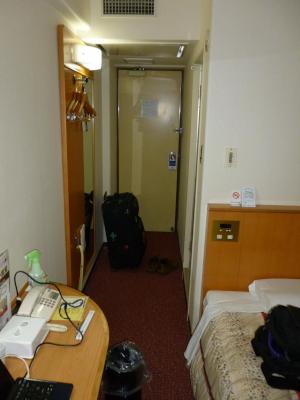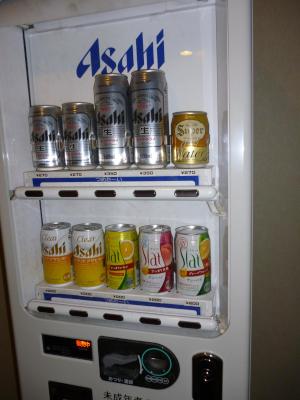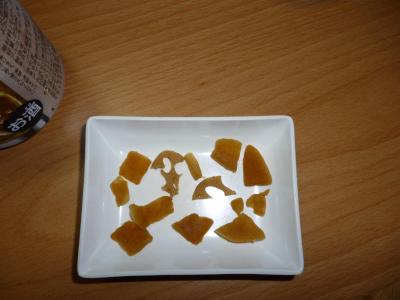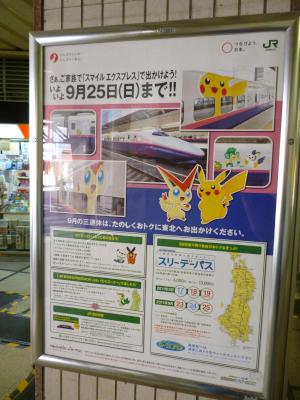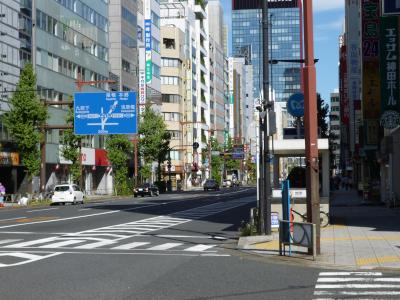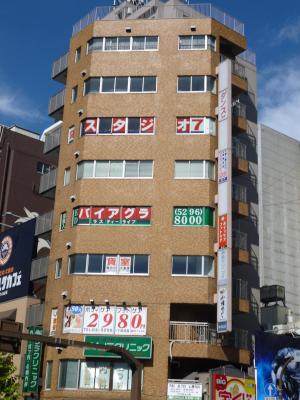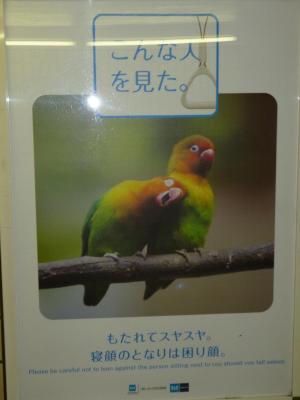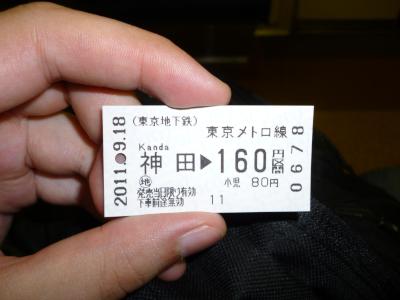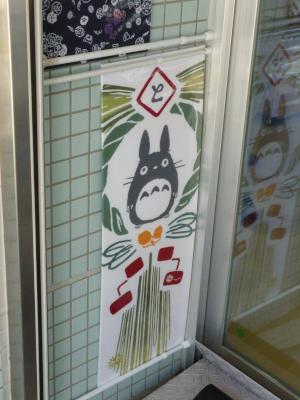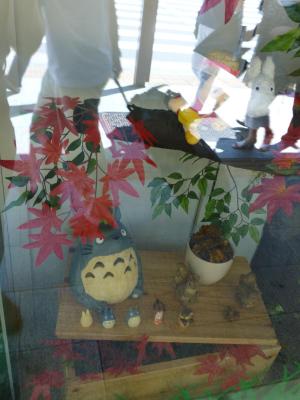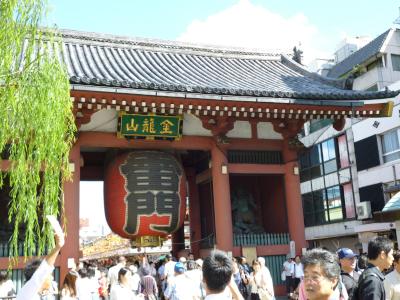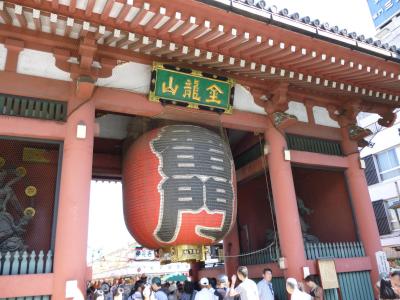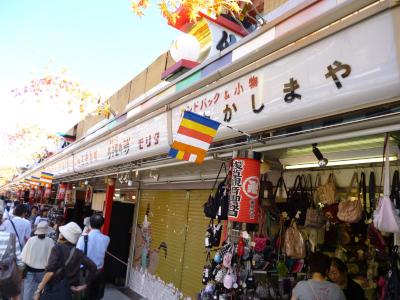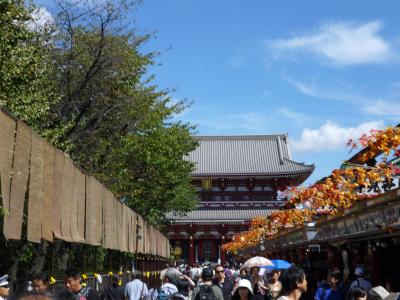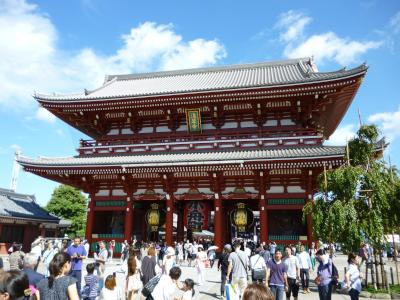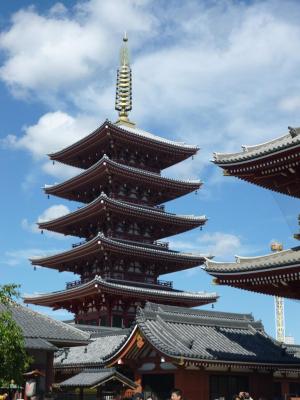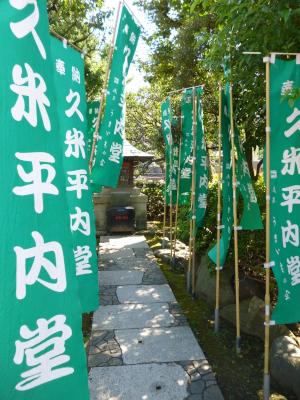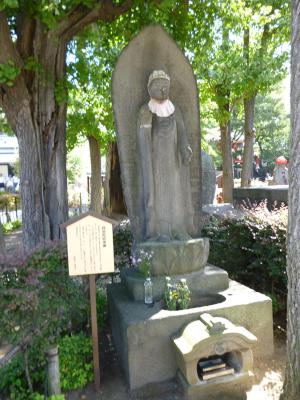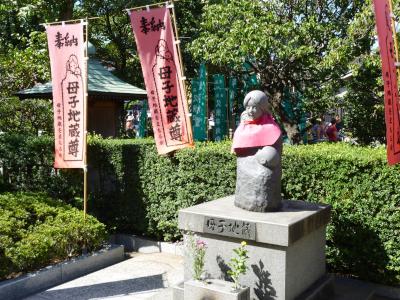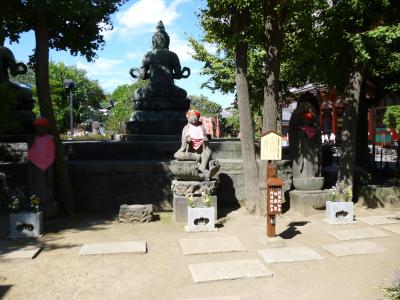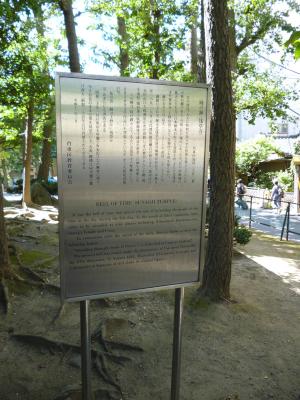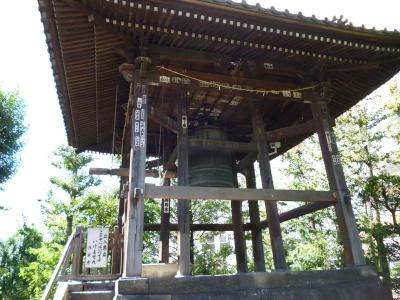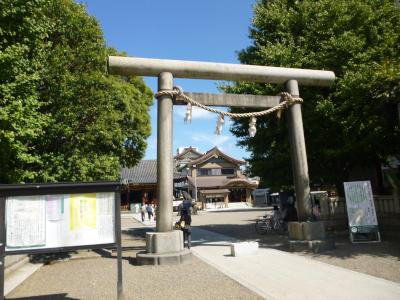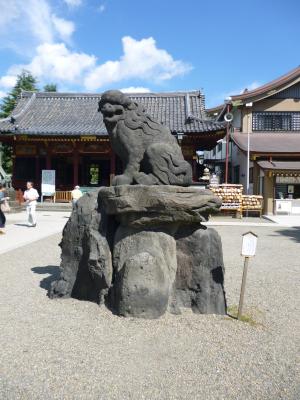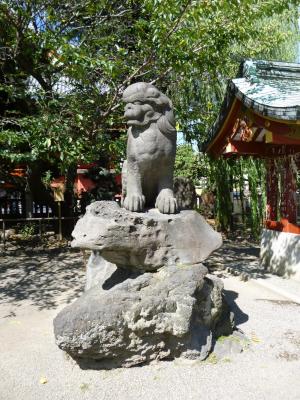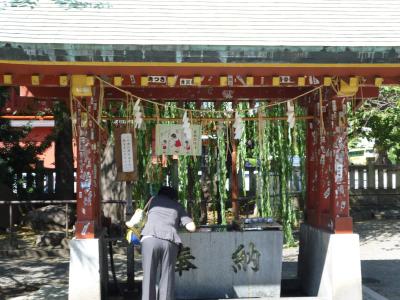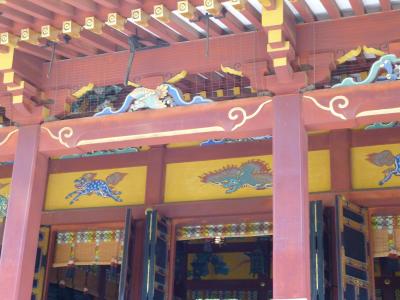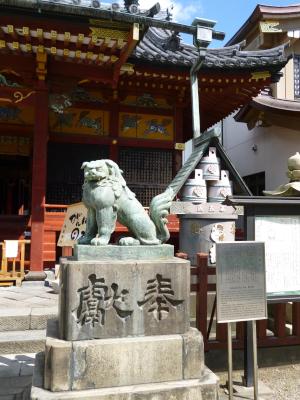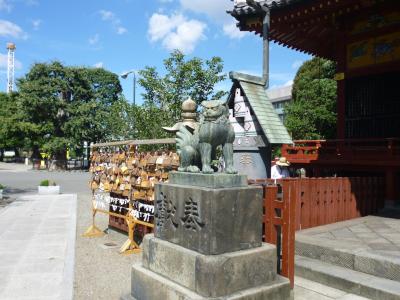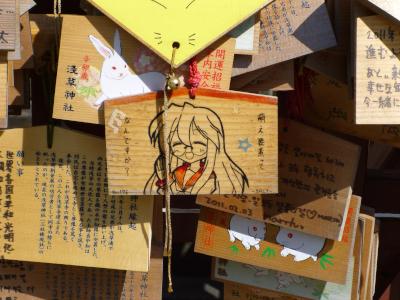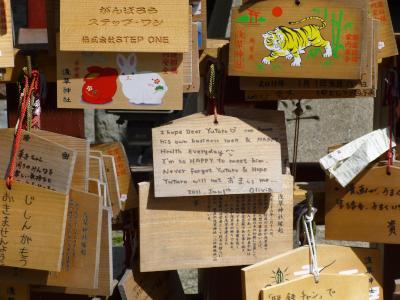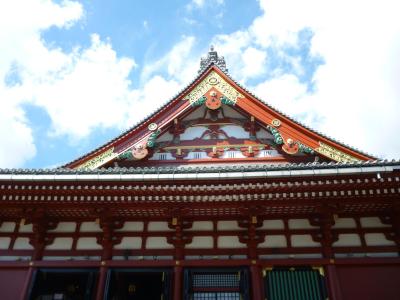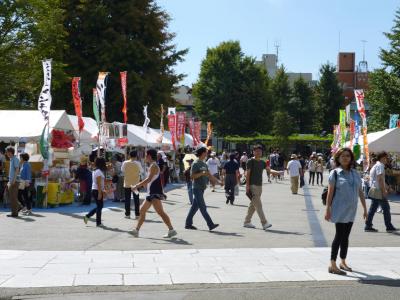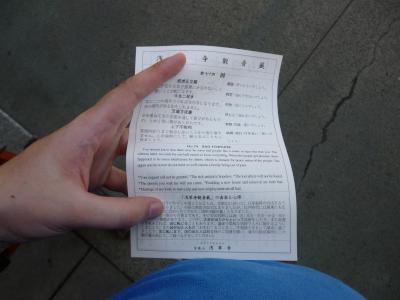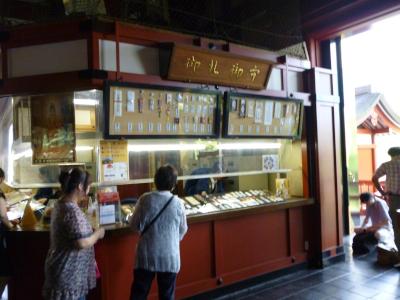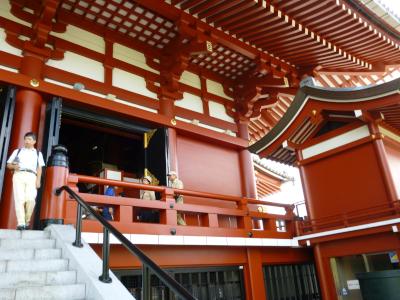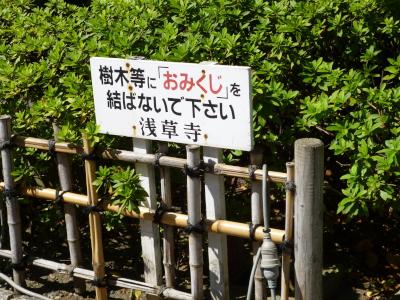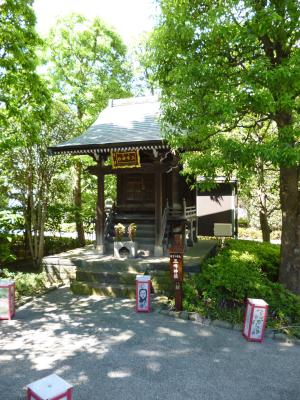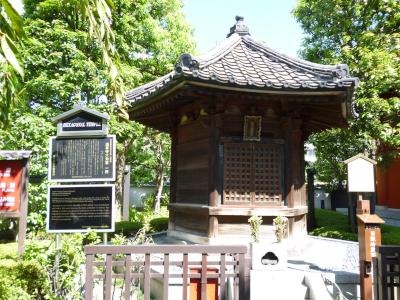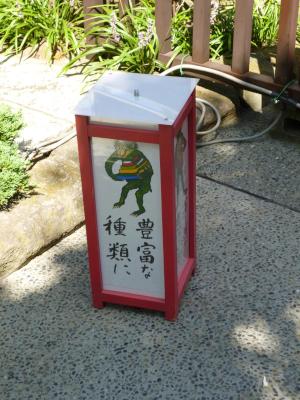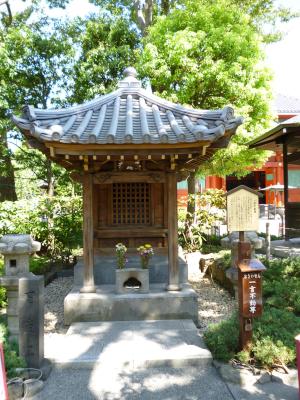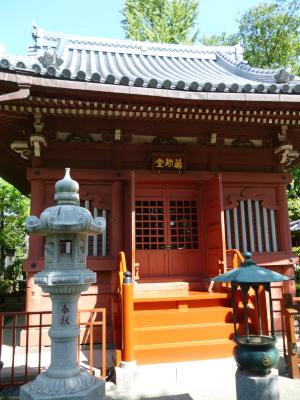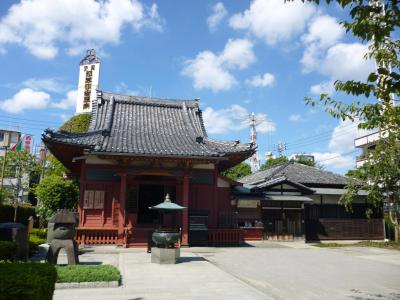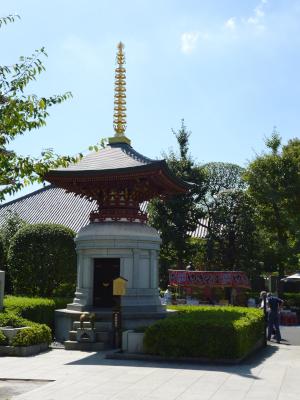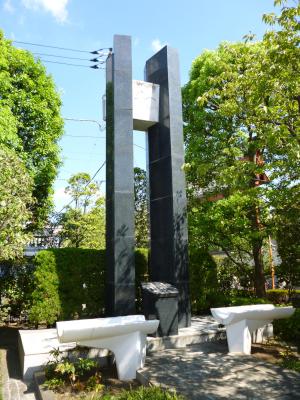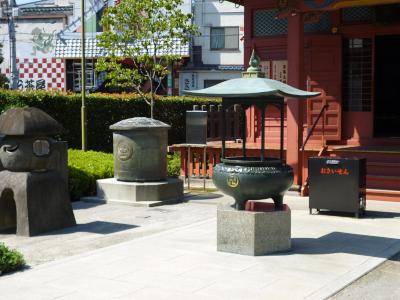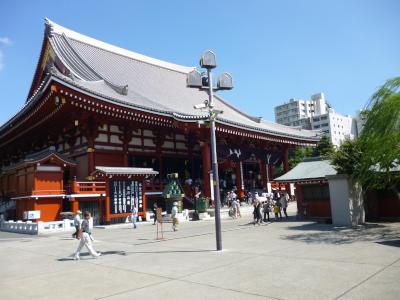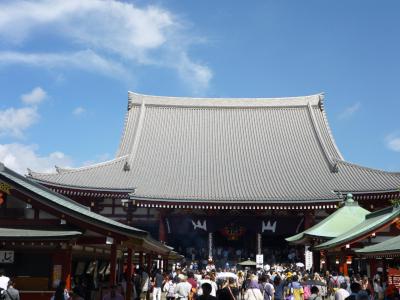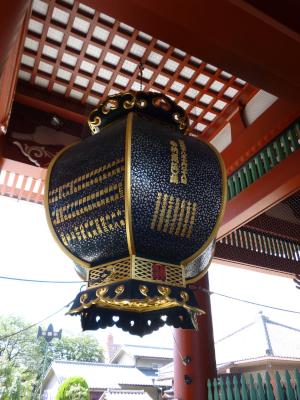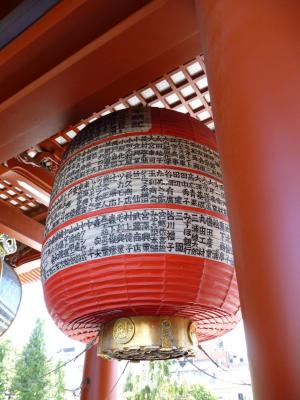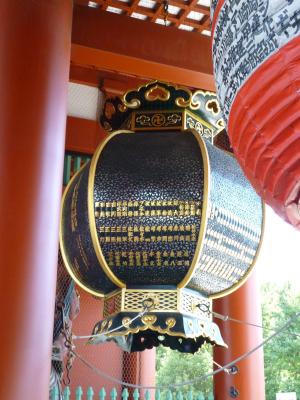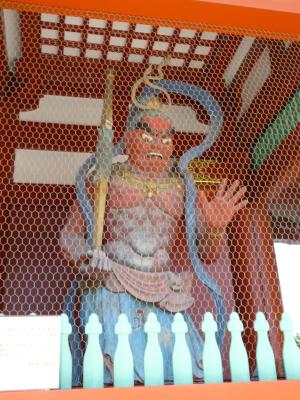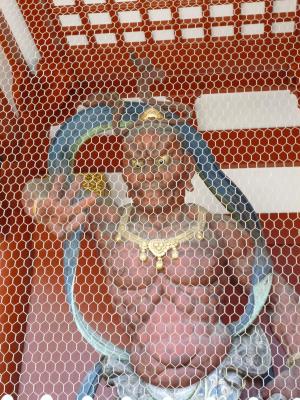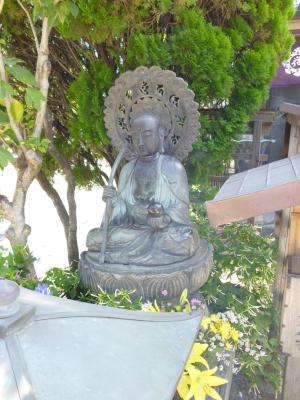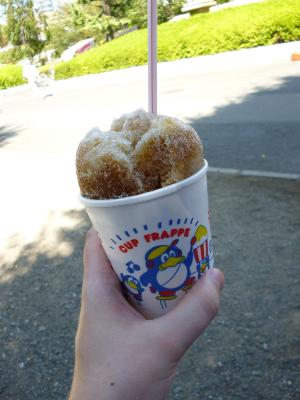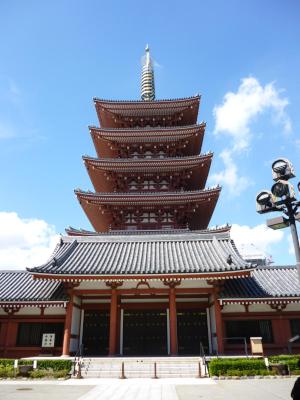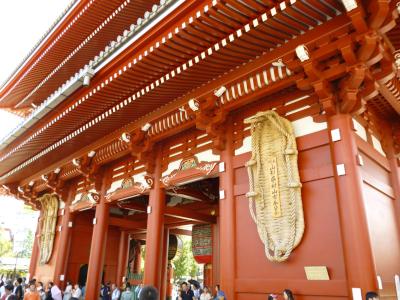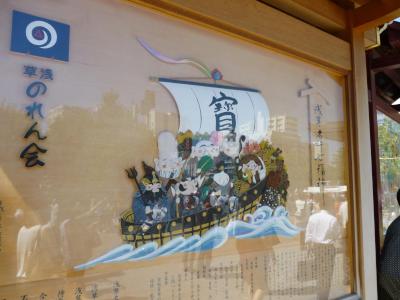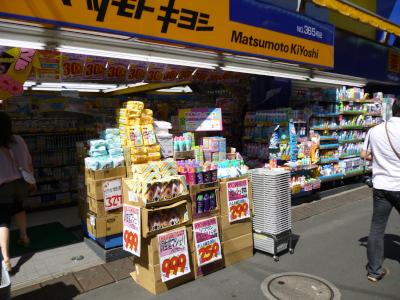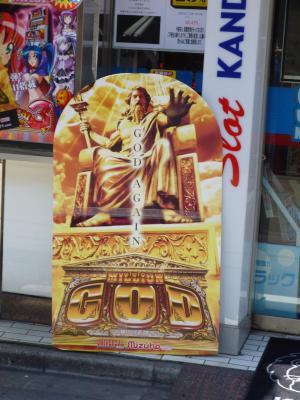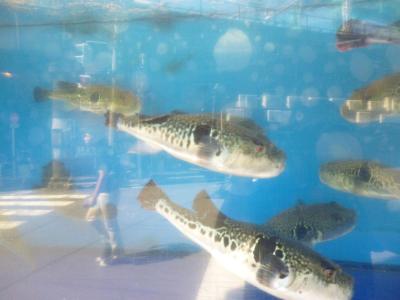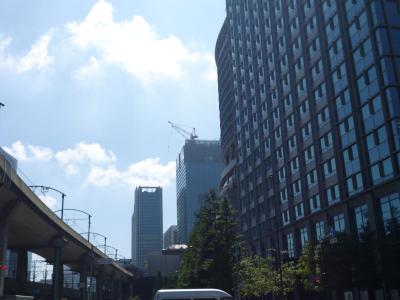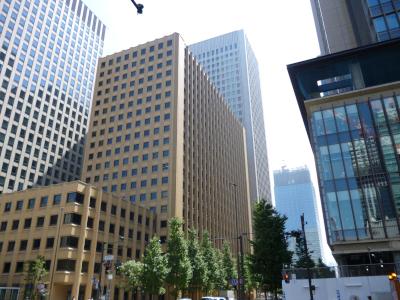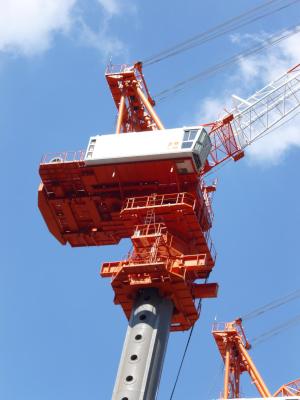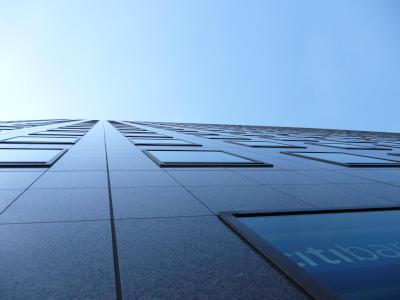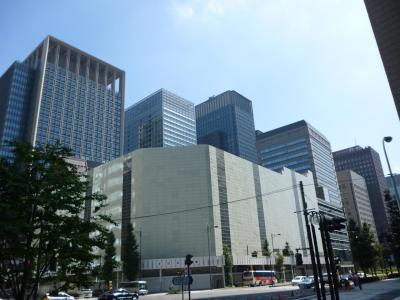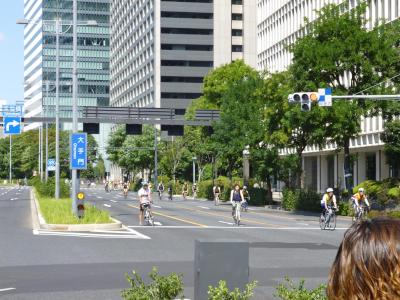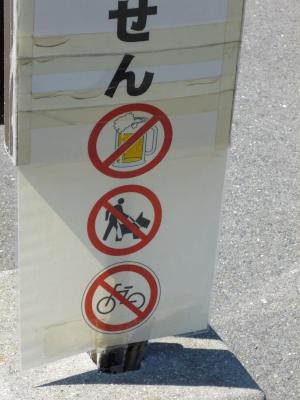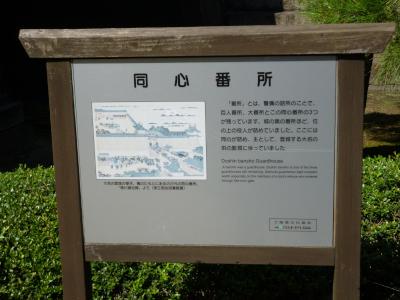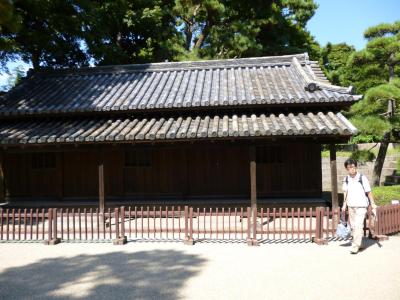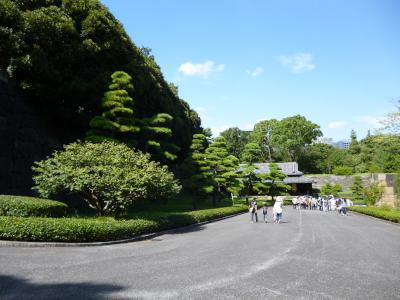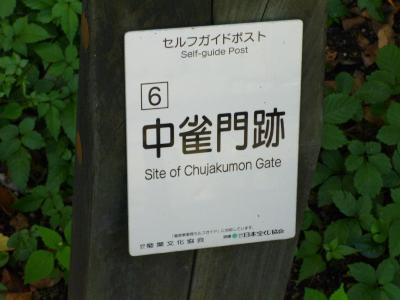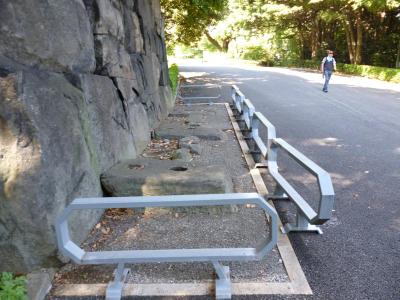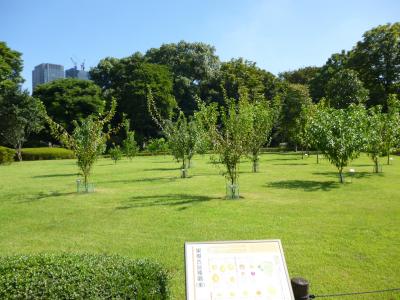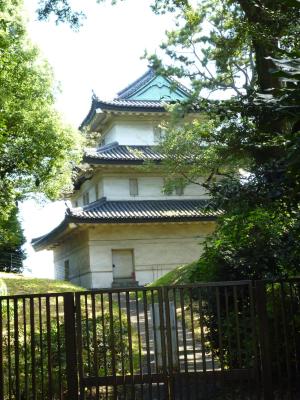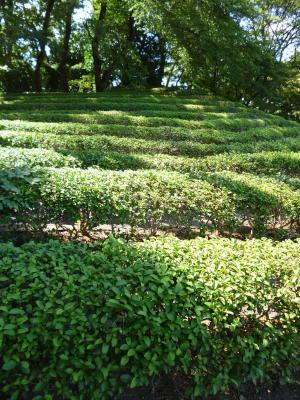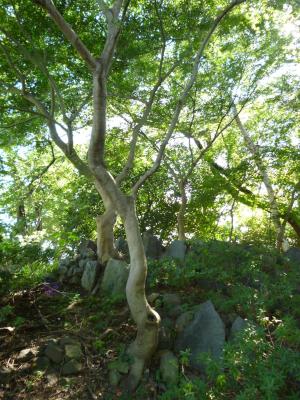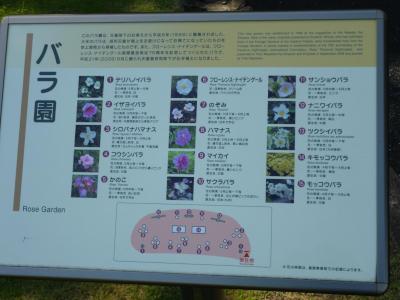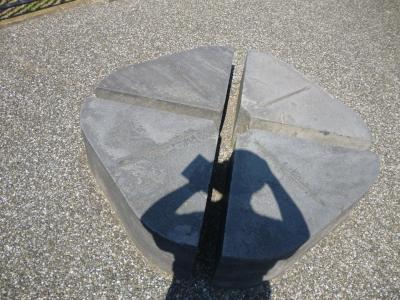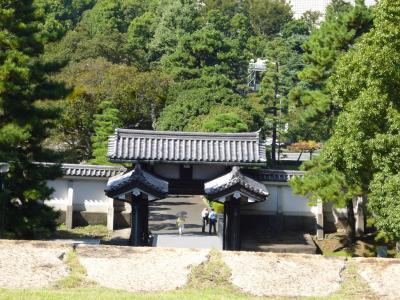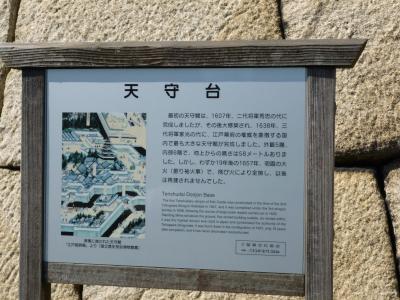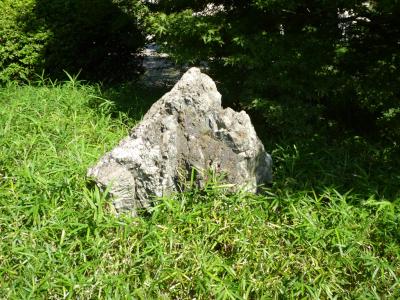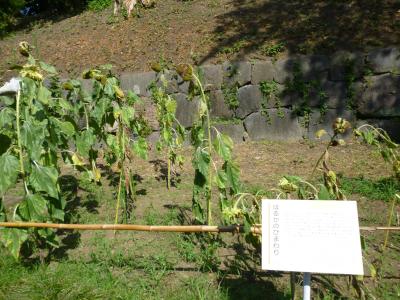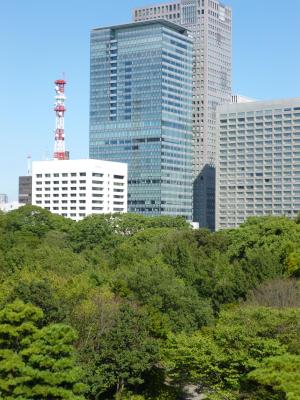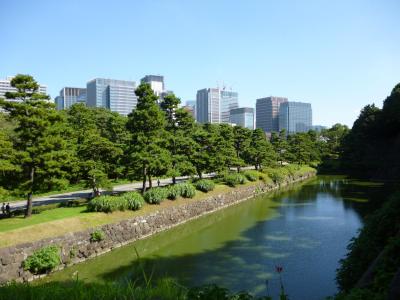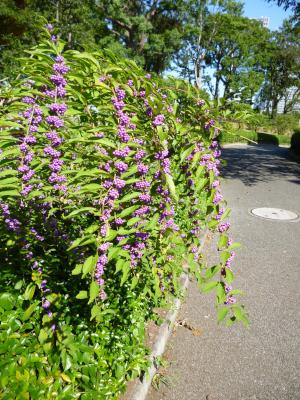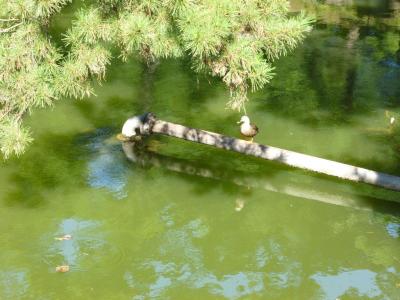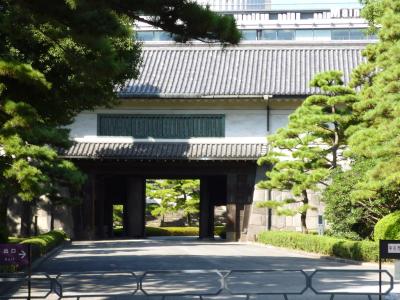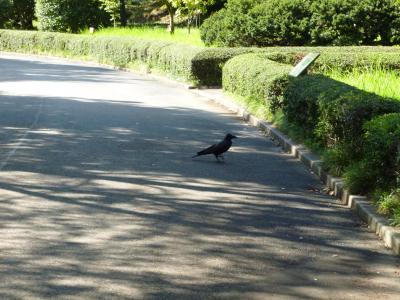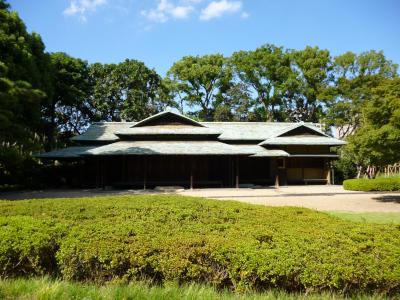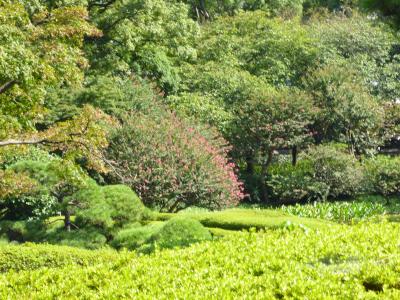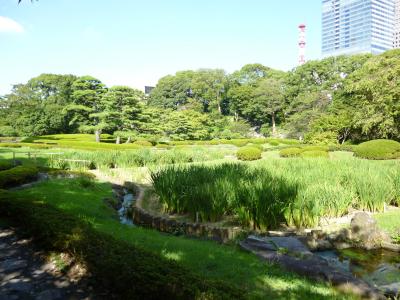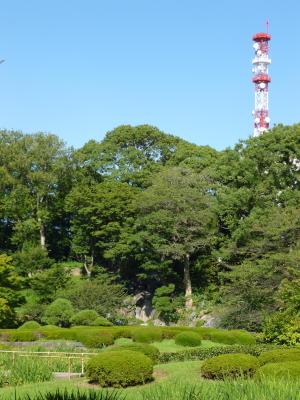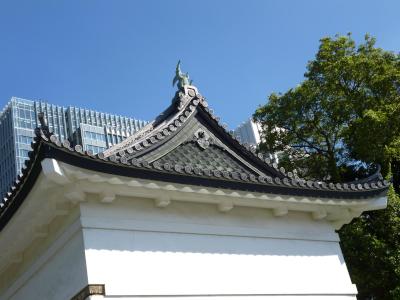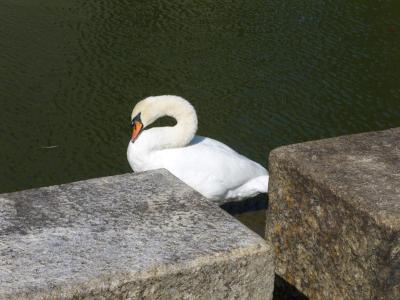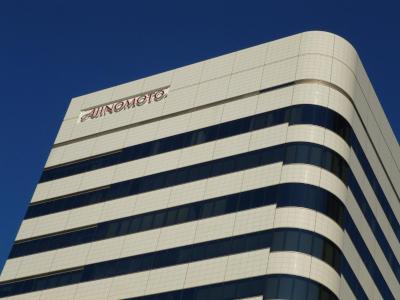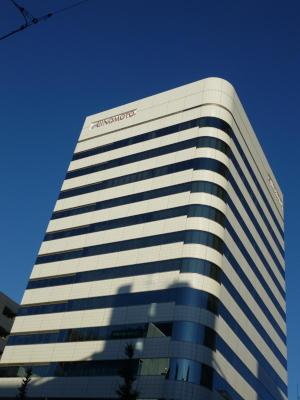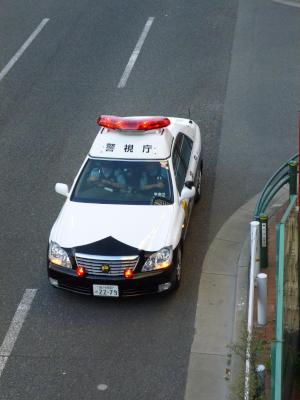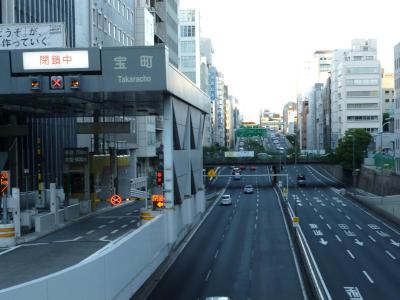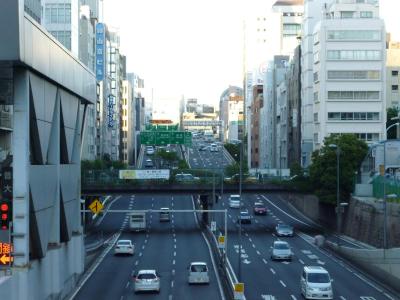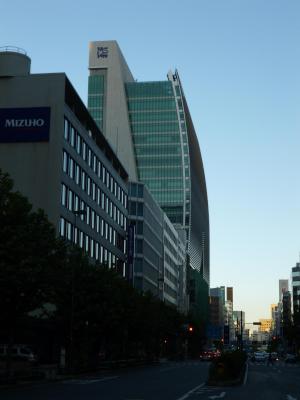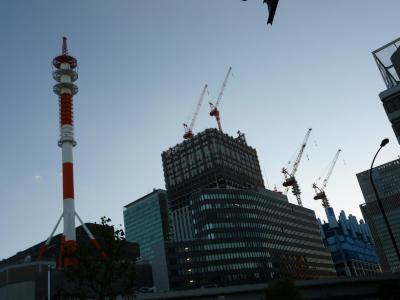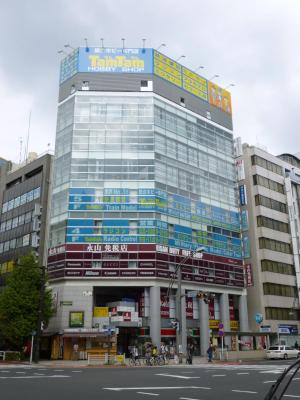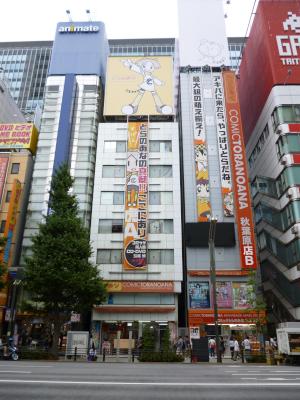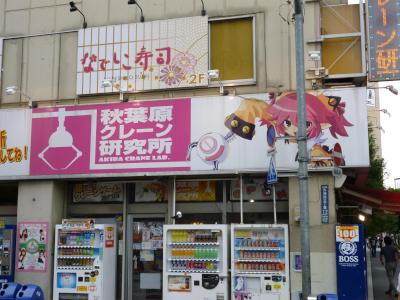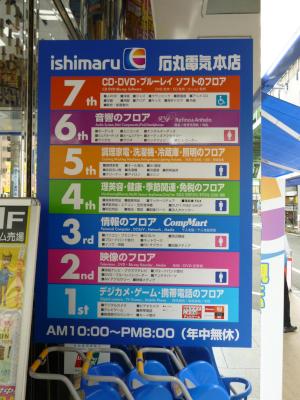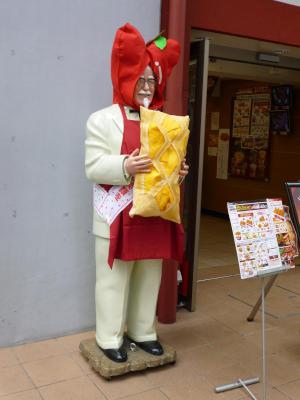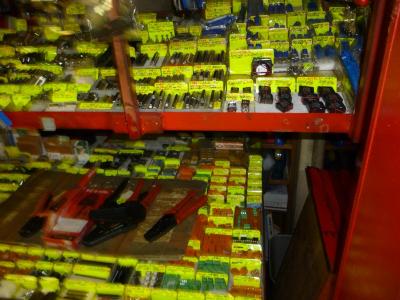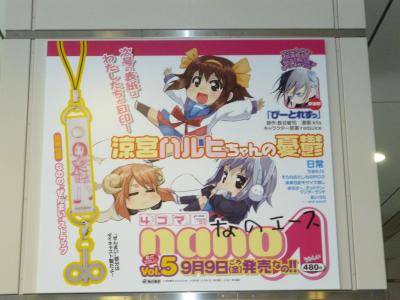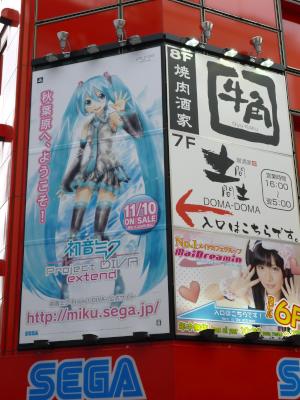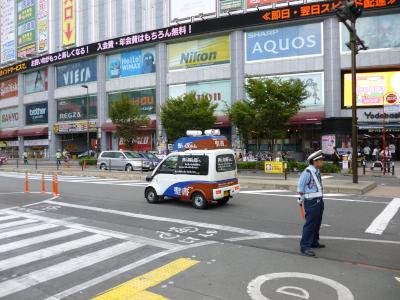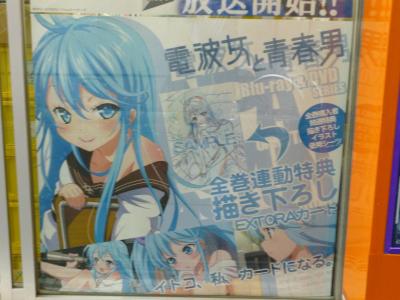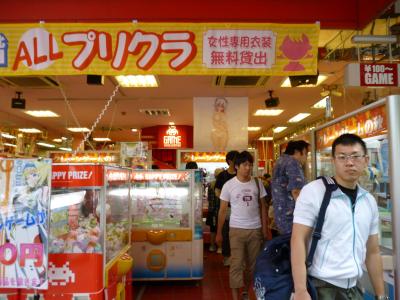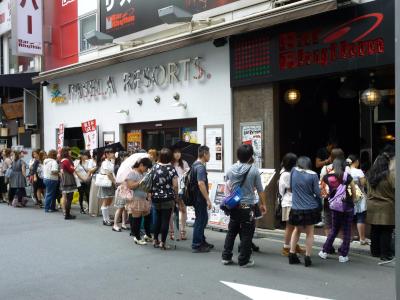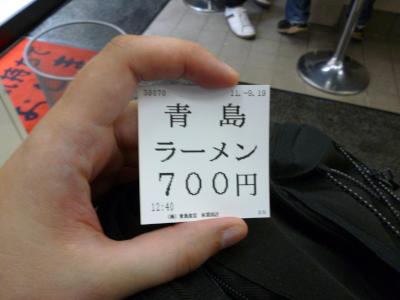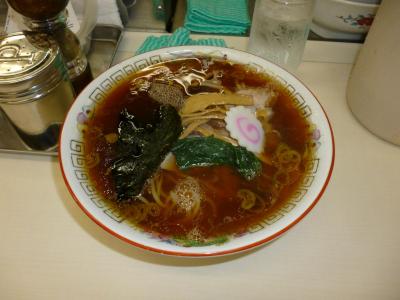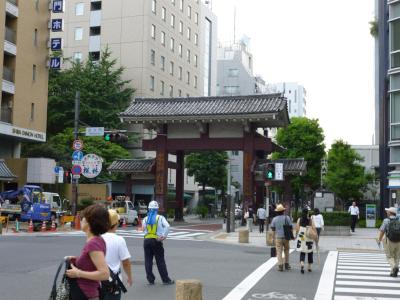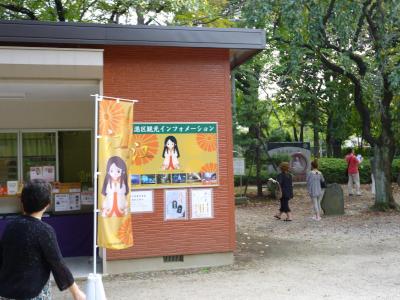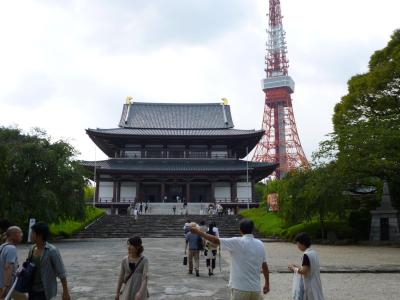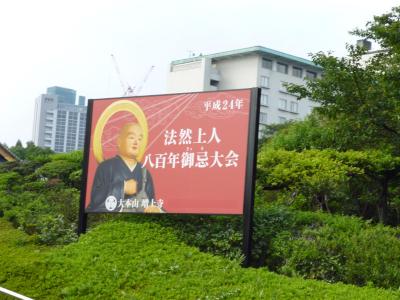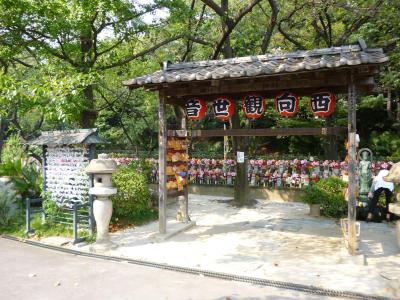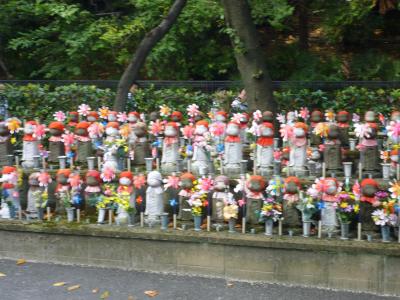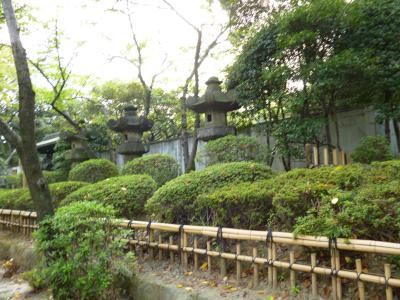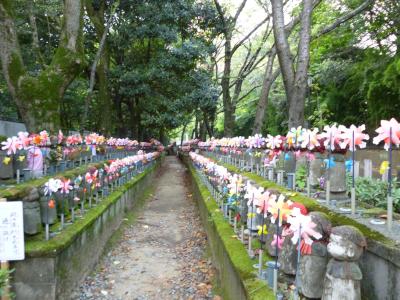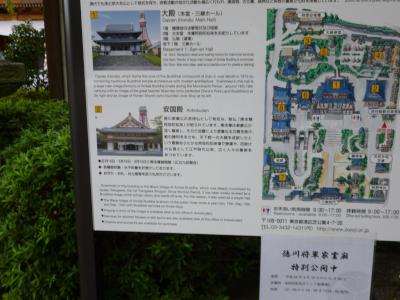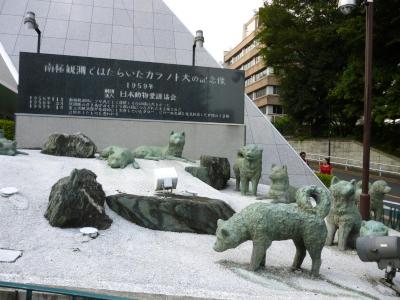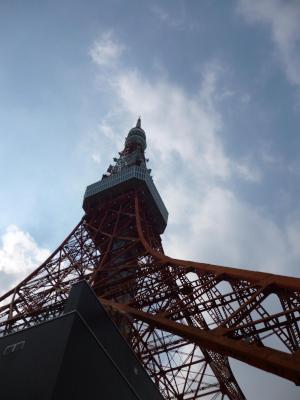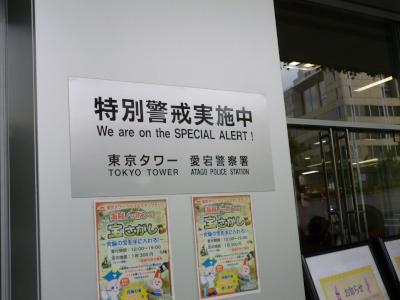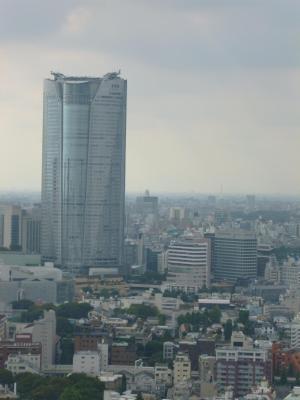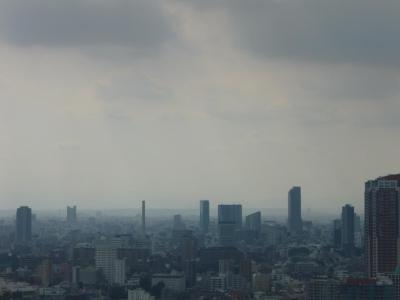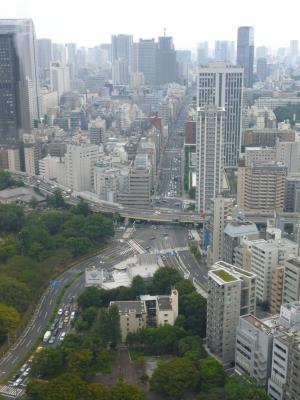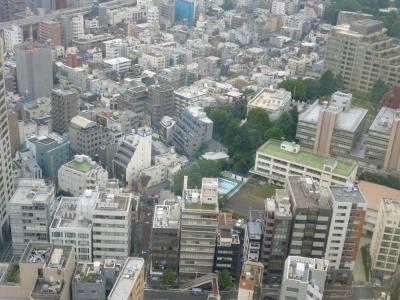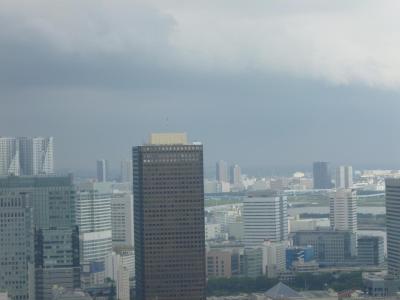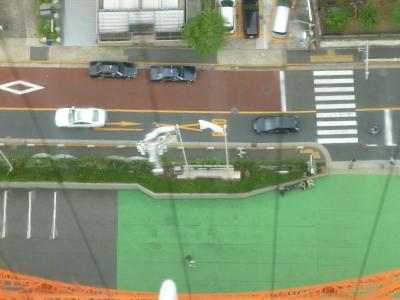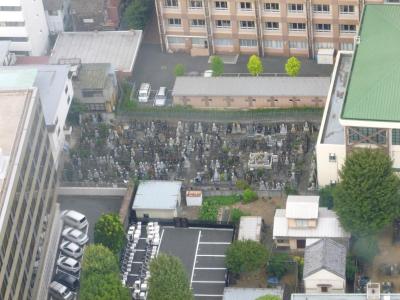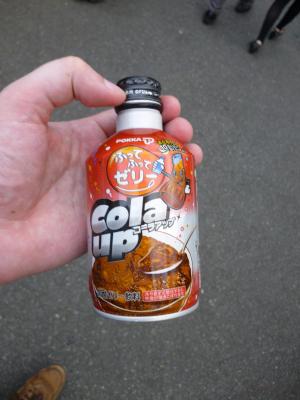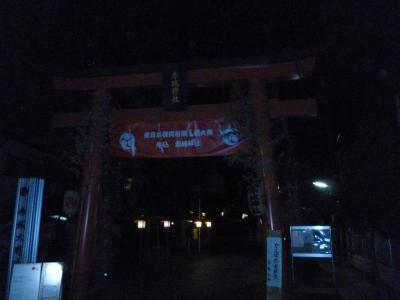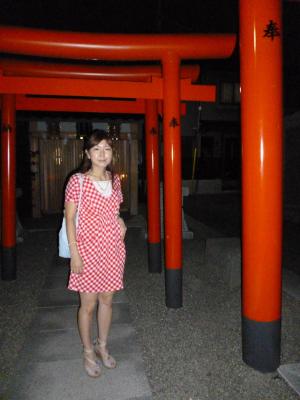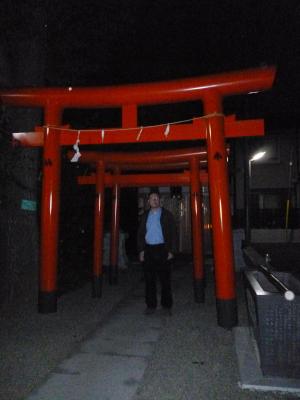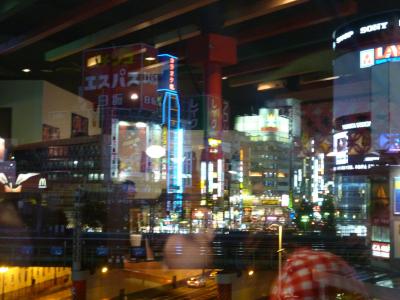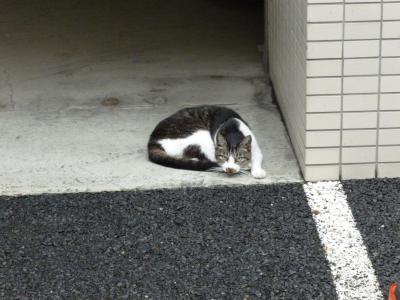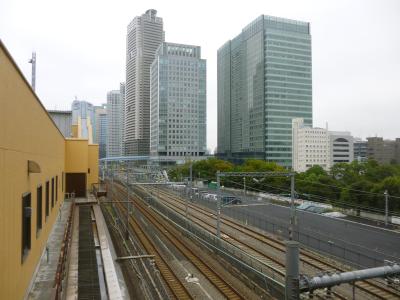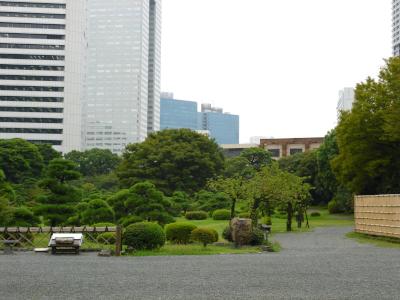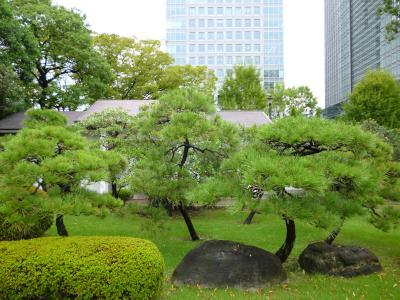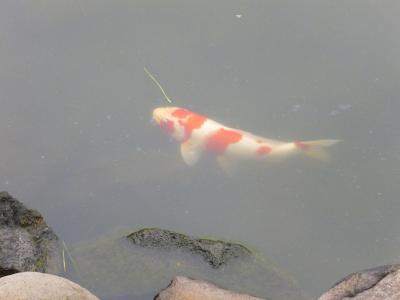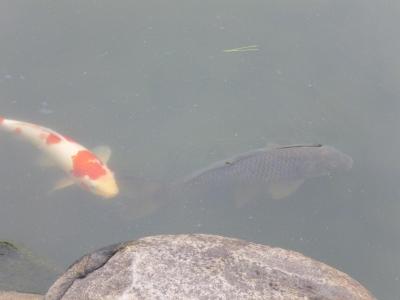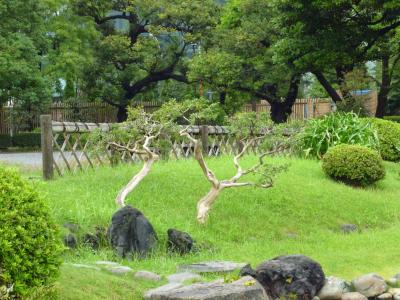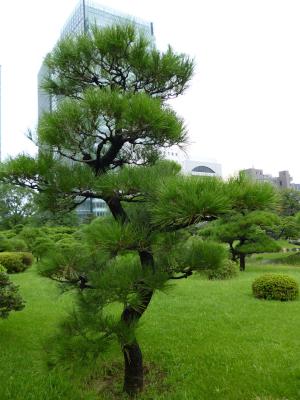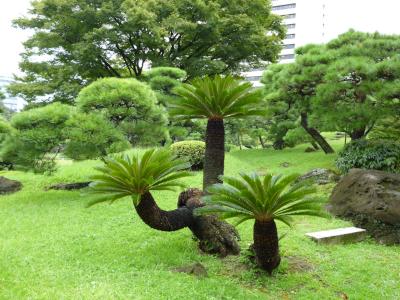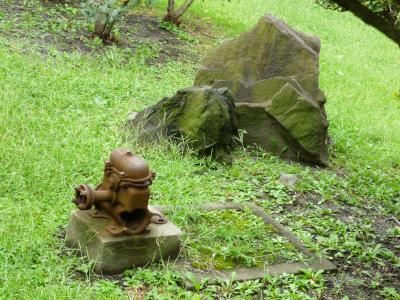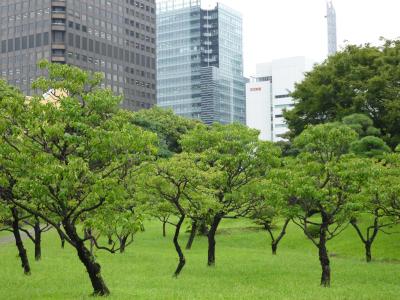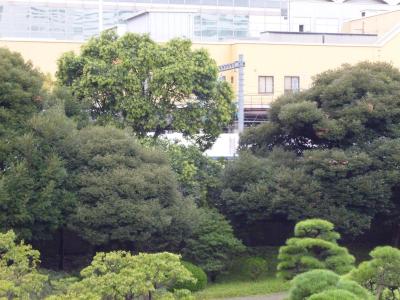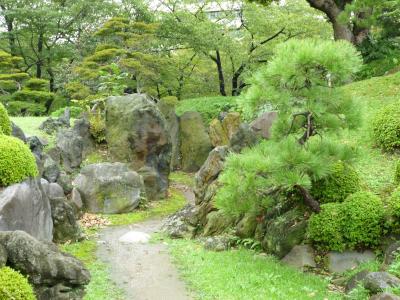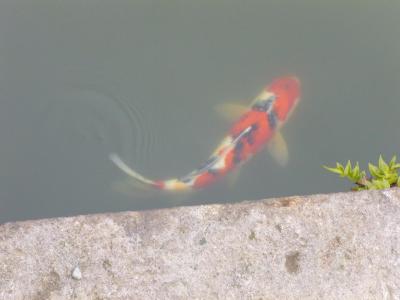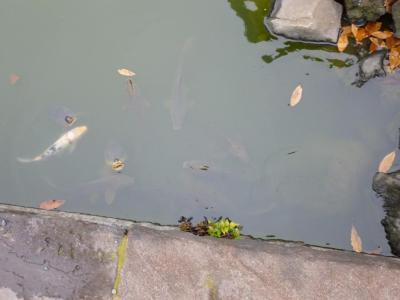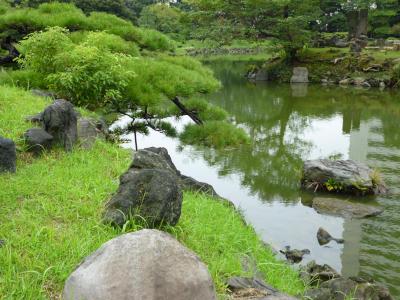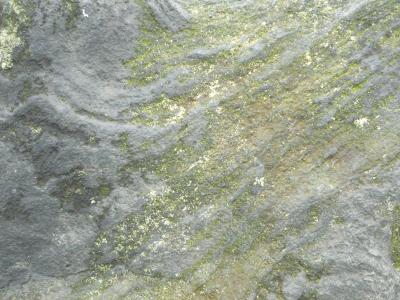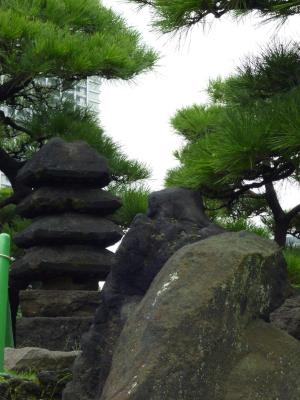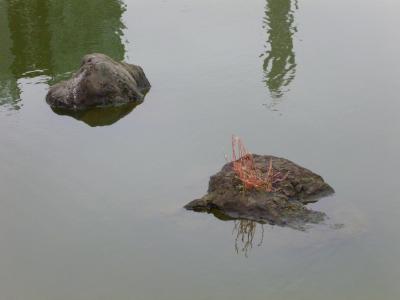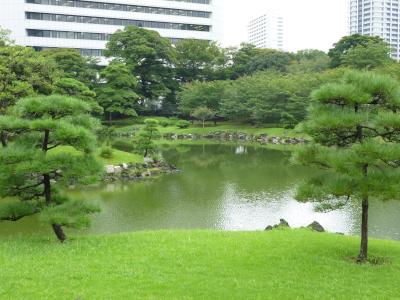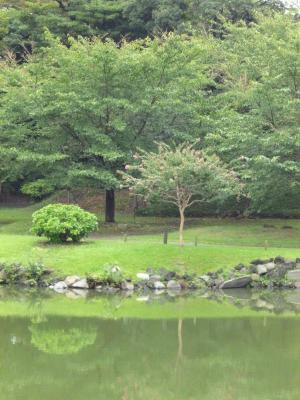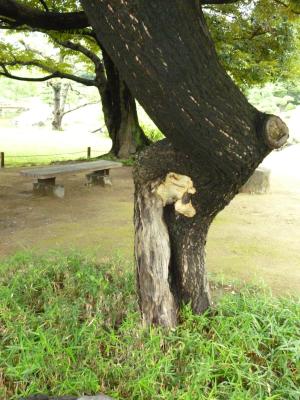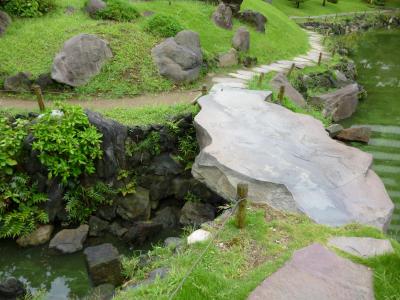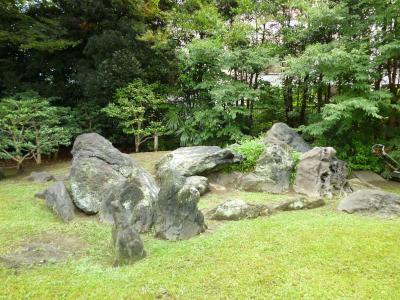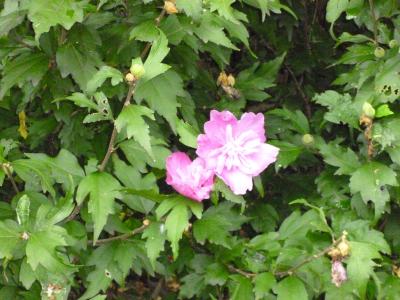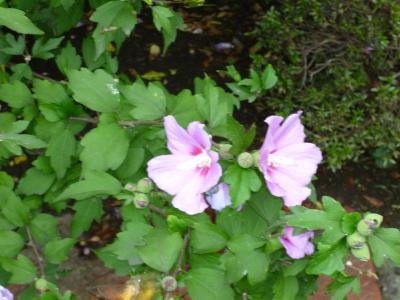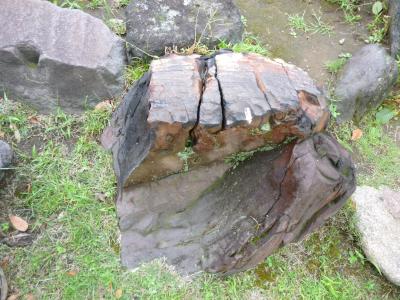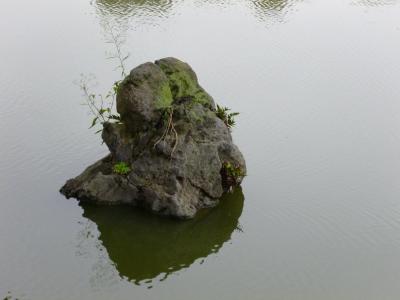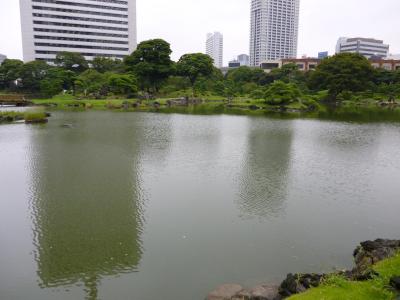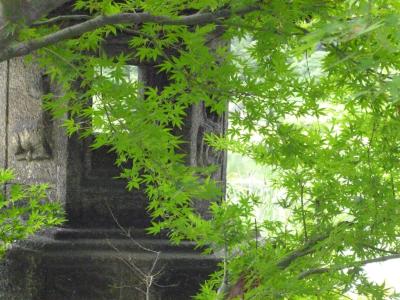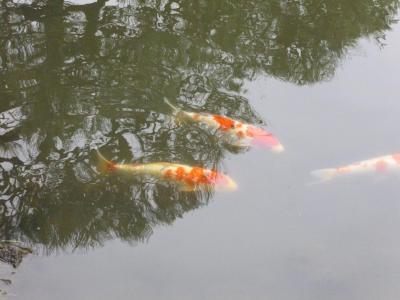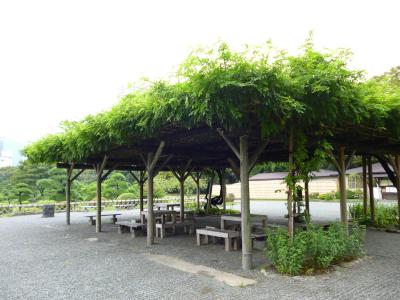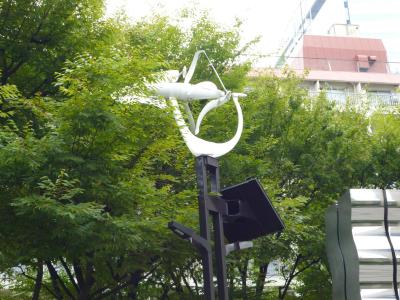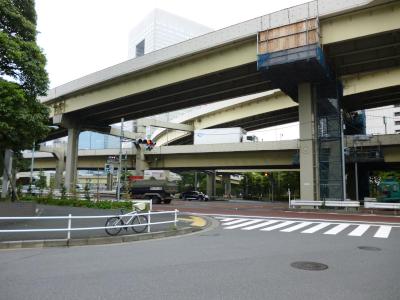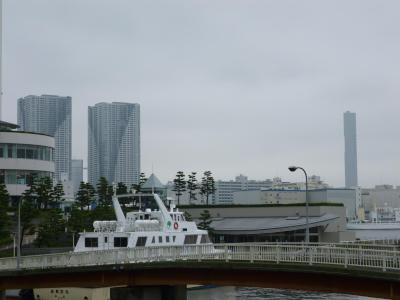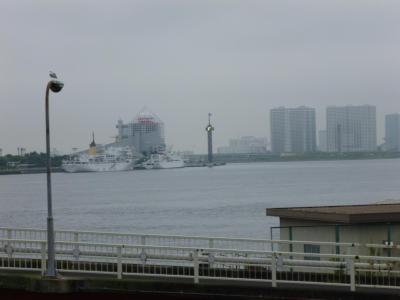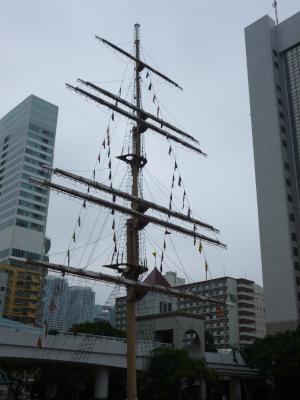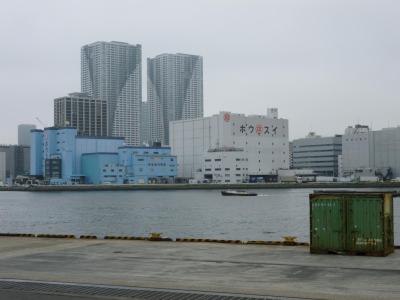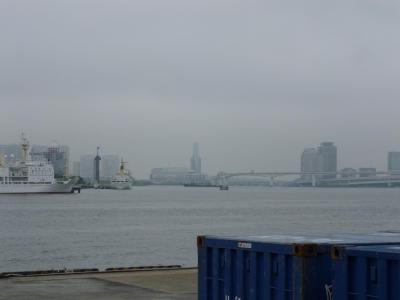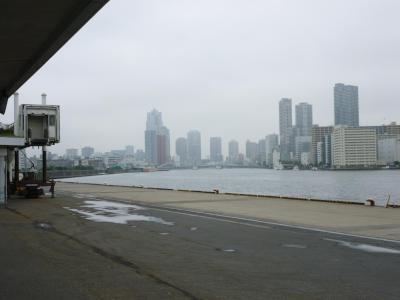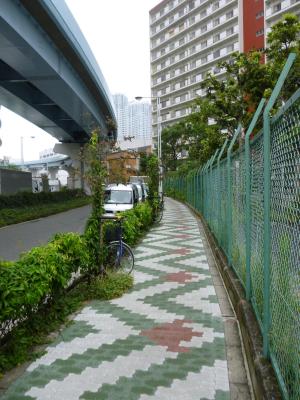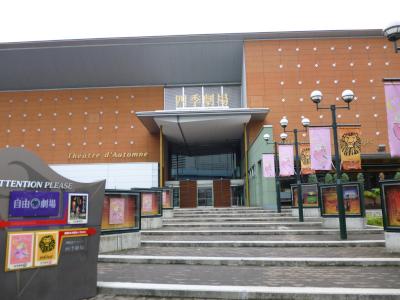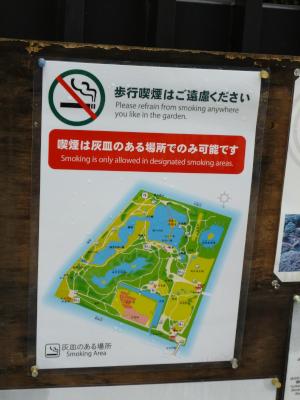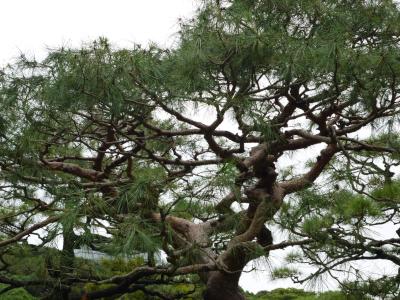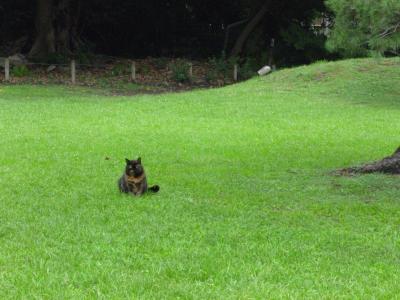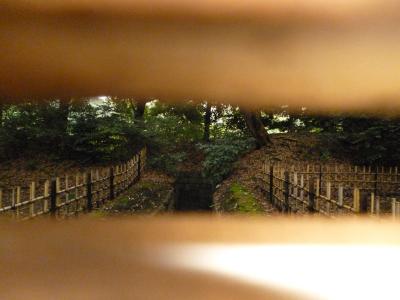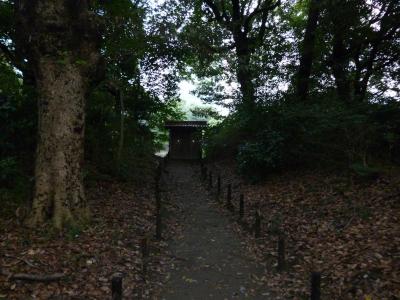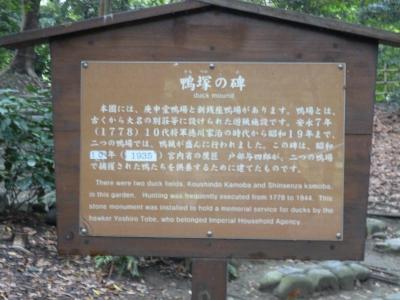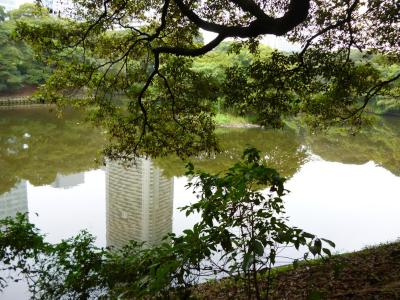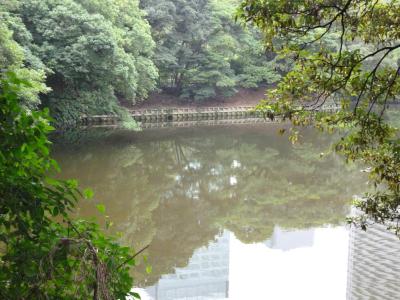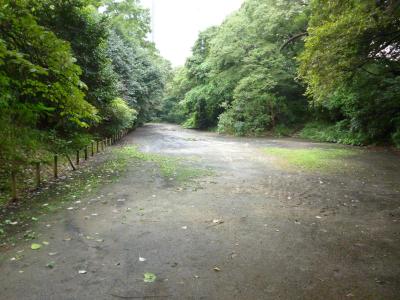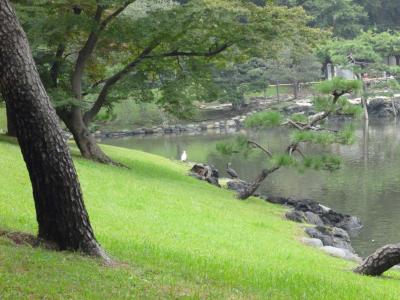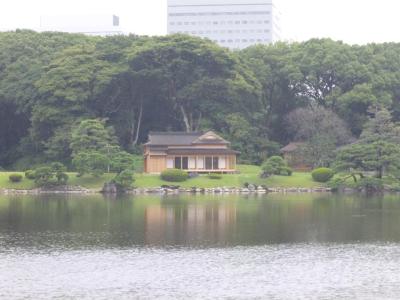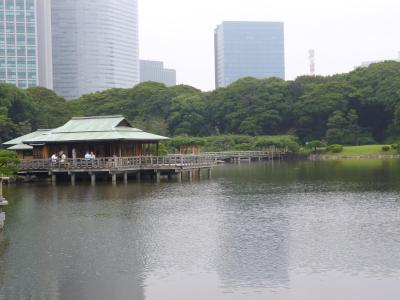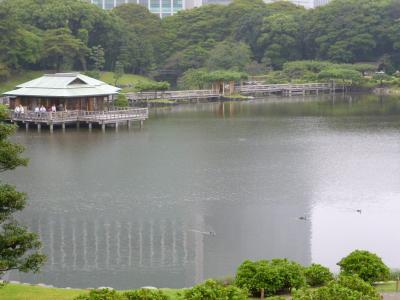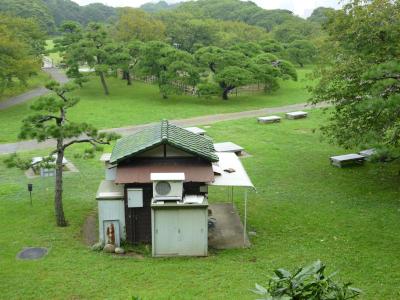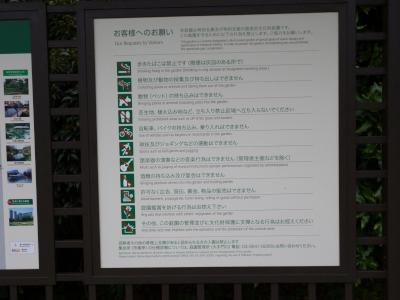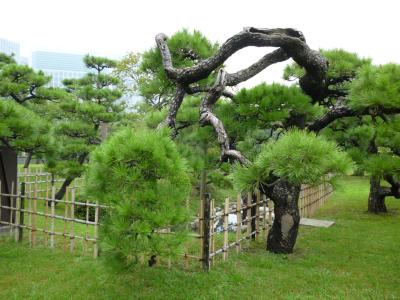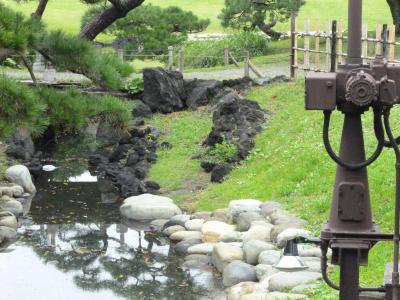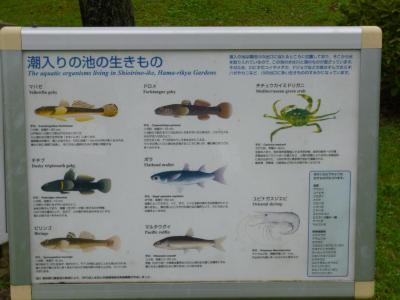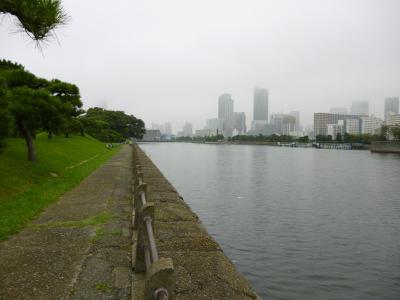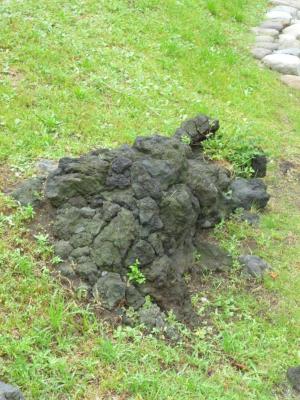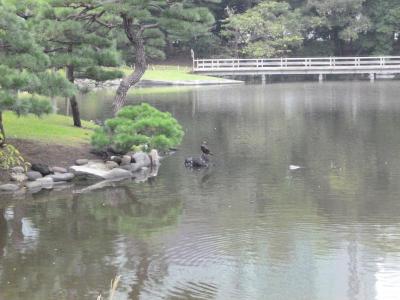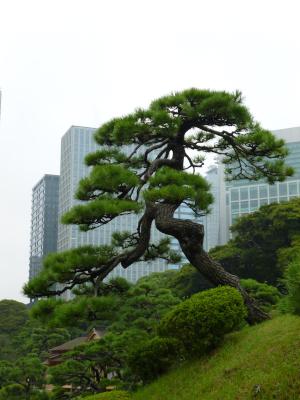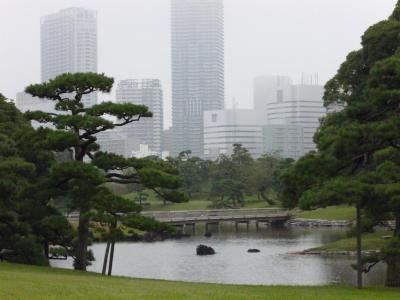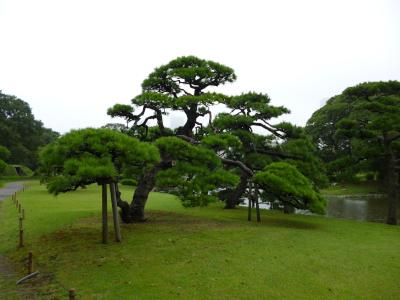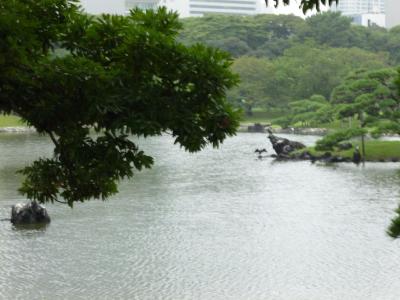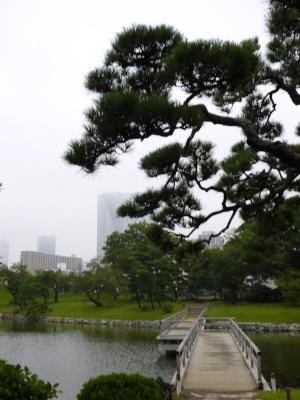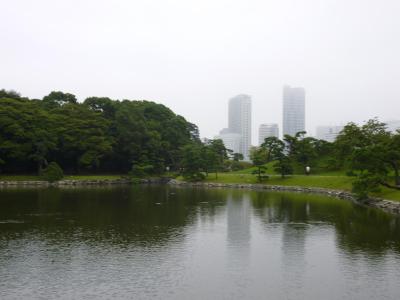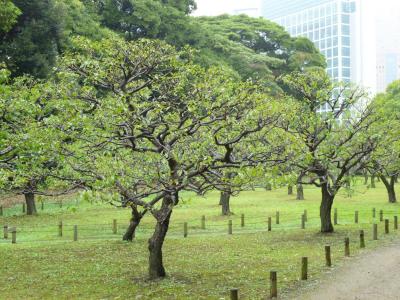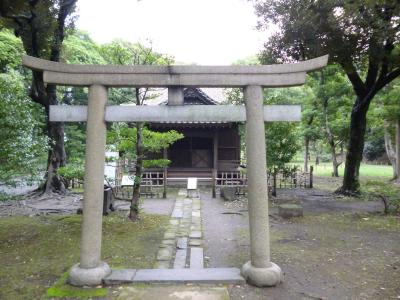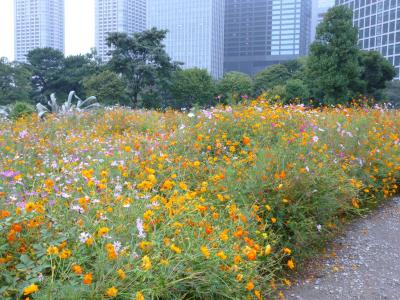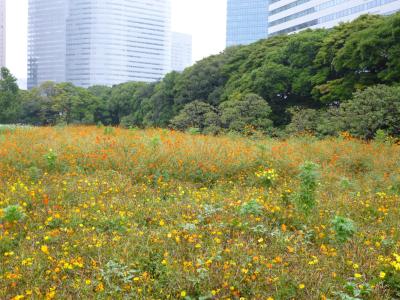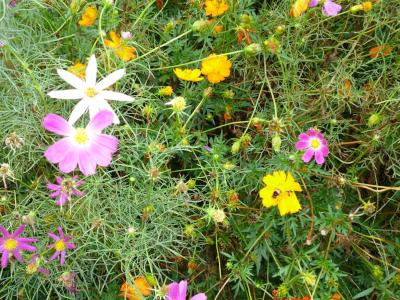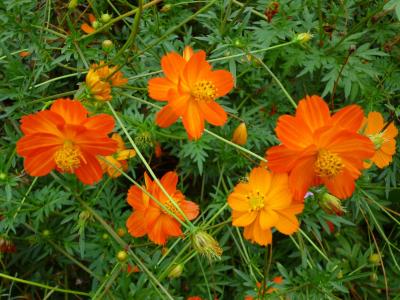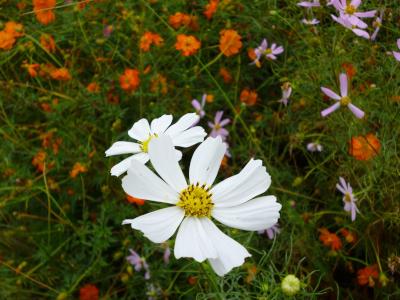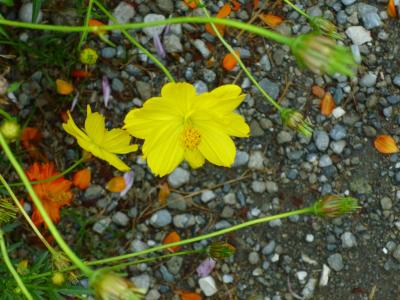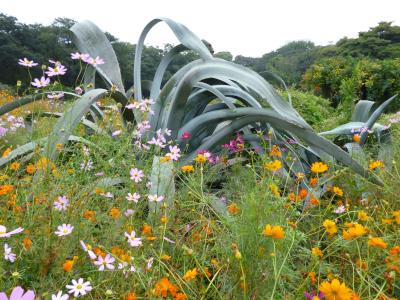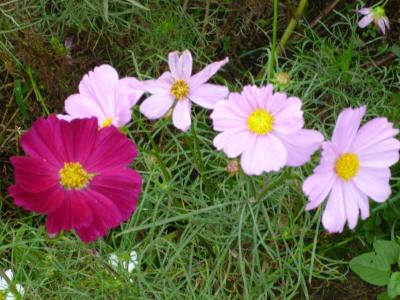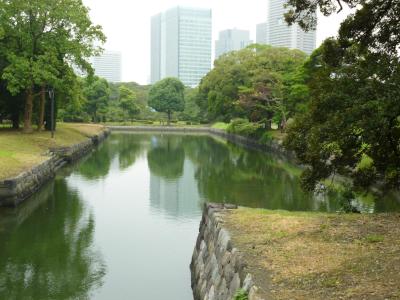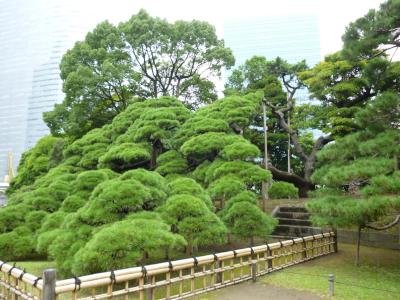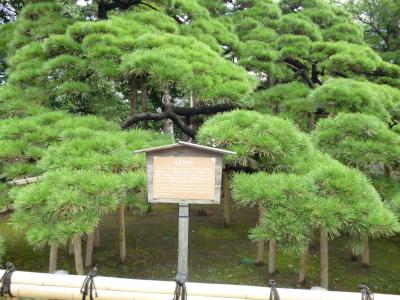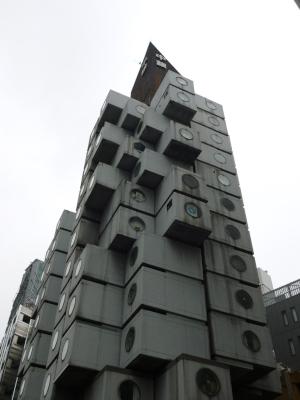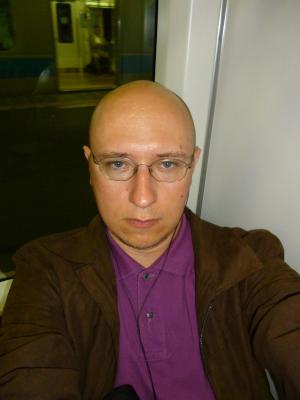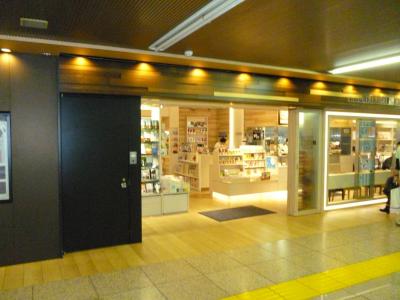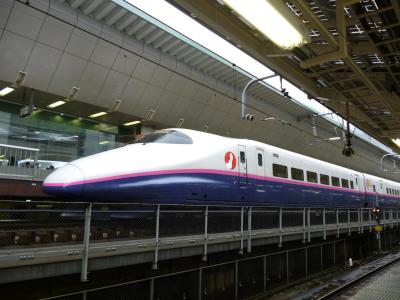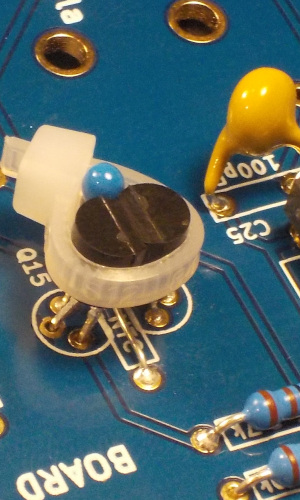Tokyo
Tue 20 Sep 2011 by mskala Tags used: travelI am starting this draft sitting on a bench in the Kyu-Shiba Gardens, near the Hamamatsuchou train station, Tokyo. This is my last full day in Japan - I leave tomorrow morning - and I have no really specific plans for the day, though in the evening I'll be meeting up with some friends who are Westerners living here (one Canadian, one British). This will probably be my last update posted before I leave. It's been quite a trip.
Last update ended as I was nearing Tokyo on the shinkansen, Saturday afternoon. My hotel in Tokyo for this leg of the trip is near Kanda Station, which I'd been warned is a somewhat rough neighbourhood. It turns out what that means is that as soon as I stepped out of the train station, someone purporting to be a Buddhist monk attempted to shake me down for a donation. But I found the hotel without further incident and settled in.
One of the fun games my Japanese friends and I play sometimes is the "I understood what you said perfectly, but I can't believe that that is really what you intended to say" game. I played this, for instance, with Miho-sensei a couple years ago when I tried to use 「犬は、宿題を食べました。」 ("the dog ate my homework") for "use the word 食べる in a sentence." Apparently that excuse isn't part of the Japanese cultural background. Another good one was "Yes, I recognize some of the characters in this anime-figurine store; for instance, Ika Musume." I got to play the game again with Yuya-sensei when we talked about the pickles at the curry place.
Thing is, when I was at CoCoIchi Curry in Nara, I saw what I thought were little jars of pickled lotus root slices on the tables, and I later asked him what the purpose of those was - are they like a topping to put on the curry, or just something to eat before or after the meal, or what? He got the same look on his face that Miho-sensei got when she contemplated the dog eating the homework.
We managed to establish the following, in roughly this order:
- There is a type of large round flower with many petals that grows in ponds and is associated with Buddhism, and the name for this flower in English is "lotus."
- The root of the lotus flower is edible, and people cut it into round slices which have a characteristic pattern of naturally-occurring holes in them. These slices can, for instance, be breaded and fried and served on a stick, and that was an item on the menu of the "things on a stick" restaurant we went to.
- Pickled lotus root is also a food that exists.
- It would be quite surprising if the fast-food curry restaurant served pickled lotus root, and a more plausible curry condiment would be pickled pieces of a certain vegetable called 「長葱」, which is sort of like an onion, but not the same thing as the usual kind of onion.
- But those wouldn't have holes.
- 長葱 means "shallot."
So, Saturday night I went to the local branch of the same fast-food curry restaurant and collected a sample, which you can see in the photo gallery. I now think, after some further consultation by email, that what is in the jars is a mixture of mostly pickled slices of daikon (which is a sort of large mild-tasting radish) but also some bits of in fact pickled lotus root. I still don't know how I'm supposed to eat it, but since I've probably reached my curry quota for this trip, I doubt that I will go back and investigate further.
Sunday morning I went to Asakusa and visited a Buddhist temple called Sensou Ji, usually thought of as the main Buddhist temple in Tokyo. It was crowded with visitors and had a festival atmosphere even though there was, as far as I know, no particular occasion in effect. There is a long broad roadway leading up to the temple and lined with tourist-trap souvenir shops. Big fancy gateways at the start and end of this road feature huge paper lanterns. The temple itself was a lot like other large touristy Buddhist temples, but it also had a large food-vendors area I hadn't seen elsewhere.
To one side of the main temple building was Asakusa Jinja, a Shinto shrine for the three men who built the temple. I was also interested in a very small shrine called Kume no Heinai Dou, which was basically just a little construction that looked sort of like a stone lantern, with a bunch of banners around it. Kume no Heinai is another of these characters who may be partially legendary, but the story is that he was an accomplished samurai who got religion as a Buddhist monk, and spent the rest of his life trying to atone for all the people he'd killed. He attracted some followers, and directed them to, when he died, make a statue of him and bury it where a lot of people would walk over it, as a further gesture of his humility and atonement. So they did that, but then after a while people dug up the statue and enshrined it for Shinto worship, and now those looking for romance visit the shrine because of a pun between an earlier name of this shrine and the word for "love letter." I wonder what Kume no Heinai thinks of all that.
Sensou Ji was the only place I saw the shake-the-box method of omikuji divination in action. Before I came to Japan I thought, based on my reading and anime viewing, that that was standard, but most of the places I've visited, including Asakusa Jinja next door to Sensou Ji, seem to use the "take one at random from the bin" system. But what they did at Sensou Ji was they had a long octagonal box with a little hole at one end, and you'd shake it until a stick came out of the hole. The end of the stick would be marked with a number, and you'd find the little drawer marked with the number, and take one of the sheets of paper therein. In the really traditional form, this process would be mediated by shrine-maidens taking your money and helping you find the right drawer, but at Sensou Ji (bearing in mind that as a Buddhist temple it wouldn't have shrine-maidens anyway) you had to do it all by yourself, following the instructions posted on signs. It was very popular, and they had at least three little buildings set up for it, each with five or six of the octagonal boxes, and two or three people waiting their turns to shake each box.
Some interesting things I noticed were that the instructional signs included prissy admonitions about not getting arrogant if you got a good fortune, and they called it 「みくじ」 (mikuji) on the signs, not 「おみくじ」 (omikuji) like everybody else calls it. The お (o) is for nouns of Japanese etymology that are being honoured either because of their own nature or because they belong to the person being addressed. (Nouns of Chinese etymology get ご go for this purpose instead; either way I think it's what ends up turning into the word "honourable" all over the place in old, stereotypical translations of Japanese or caricatures of English spoken by Japanese people.) I don't know why the difference; but inasmuch as I think omikuji isn't really a Buddhist thing at all, I suspect there may have been some kind of religious concept in play of the temple not wanting to endorse divination too strongly, despite being willing to take people's 100円 a pop for doing it.
I got a similar vibe from the dour priests behind the counter at the Sensou Ji charm shop: okay, we'll sell you these things because they're harmless, we can use the money for worthy purposes, we know that you expect it at all religious sites, and you don't know the difference between us and those pagans at the shrine next door anyway, but we don't have to approve of it. On reflection, I think I'll stick with the charm I got from the shrine-lad at Keta Taisha.
Also, although the Sensou Ji omikuji themselves were written bilingually English-Japanese, and so were the posters telling you how to do it, the numbers on the sticks and on the little drawers were written only in kanji numerals (mine, for instance, was #74: 「七十四」). So if you couldn't read those, you'd need very good visual memory to do the ritual, bilingual instructions or not. I've found this kind of thing to be common: there'll be some attempt made to accommodate people who don't know Japanese, but not necessarily enough for it to really work. Sensou Ji "mikuji" #74 was a curse - the only one I've gotten to date - so I tied it onto the rack instead of taking it with me.
Sensou Ji took a lot less time than I had budgeted, and I realized they probably wouldn't let me back into my room at the hotel so early, so I had to make an on-the-spot decision on where to go next. I decided to wander South of Kanda and visit the East Gardens of the Imperial Palace. I don't have a whole lot to say about those, but I took a lot of pictures, which you can see in the gallery.
As dinner time drew near on Sunday, I wasn't sure where I wanted to go or what I wanted to do. I ended up going to take a photo of the headquarters of the Ajinomoto Corporation, the world's foremost manufacturer of monosodium glutamate, mostly as an excuse to get out and see another part of the city. That meant taking the subway and learning how to do so. Afterward I wandered around some more, looking for a place I felt like eating, and I ended up choosing a restaurant of the kind where you buy a ticket from a machine at the door for the food you want, and present it to the staff.
I had a beef bowl. Now, beef bowls are apparently the Japanese equivalent of doughnuts, in that there is an idea that police officers spend a lot of their time on duty sitting around eating beef bowls instead of working, and I always thought that was just one of those amusing stories people tell. But sure enough, the only other customer in the restaurant during the time I was there was a cop eating a beef bowl. Actually, I think he was technically a security guard, and I think what he was eating may have been something else rather than exactly a beef bowl. I still felt amused, though. And it gave me some hope that maybe police commissioners' granddaughters really are "like that." (That was a Lucky Star reference. It's just as well for you if you don't understand it.)
On Monday morning I visited Akihabara, the Electrical Town. This is a place that was once a market for electronic components. Gradually it changed to be mostly about consumer electronic products, and in recent years it has changed again to become a centre of anime, manga, and similar fan culture. It's also rife with meido cafes, where you can drink coffee and be simpered at by women in frilly maid uniforms. Competition among these places is fierce, so employees go out in their uniforms to hand out flyers and attempt to drum up business. I didn't see any knock-down drag-out pigtail-pulling stocking-shredding bodice-ripping fights between maids from rival cafes - I think they actually have some kind of official allocation of flyer-handing-out turf to prevent that - but of course it would have been cool and I'm totally going to use it in my fiction writing.
I didn't take photos of the maids, nor most of the other cosplayers I saw. It is not done to take photos of them without permission, and if you ask permission, they may try to demand a fee for it, or aggressively attempt to sell you other services. There were also a lot of other things I didn't photograph. But I've posted some commentaries along with the photos I did take, in the gallery, so you can go look and read them.
At noon I met with an academic colleague who works for Hitachi. I had noticed, shortly before my trip, that one of my papers had been cited in a paper written by this group, so I emailed them saying, "hey, I'm going to be in Tokyo, want to visit?" and the end result was that this fellow was kind enough to come out and have ramen with me and show me a few of the sights.
We went to Aoshima Ramen, which is a tiny hole in the wall type of place with apparently a reputation for the best ramen in town, and we waited in line about a half hour to use the ticket machine and then wait again for a place at the bar to turn in our tickets for bowls of soy-sauce ramen. It was pretty good, I guess, but I'm not sure good enough to justify that much of a big deal as compared to the many other ramen shops that exist in Tokyo. I think sometimes, these kinds of things become famous for being famous as much as for their intrinsic merits.
Then we went up the Tokyo Tower, which involved an unplanned visit to another Buddhist temple that turned out to be on the shortest path to the tower. I think it was called Zojo Ji. Not a temple I know much about, but it had some interesting-looking rows of little statues with pinwheels. I always get a bit of a thrill when I see Japanese people getting lost in Japanese cities - my companion had some sort of GPS in his cell phone and it didn't do him much good - because it suggests that I'm not doing so badly when I, too, get lost. It appears that if you have to walk somewhere in Tokyo what you just have to do is you leave extra time and wander in what you think is the right direction until you probably get there, and that's just the way it is.
In the evening I met again with Yae-sensei, one of my former teachers from the TIJ language school in Toronto. Our earlier date hadn't been much fun because I was ill from the effects of the plane ride and time change. We took the subway to a shrine where she'd heard there was a shrine festival (matsuri) in progress - which would be nice because I'd been in a position to just miss such events both in Nara and Osaka - but unfortunately, the festival had concluded earlier in the day and the place was deserted. We at least got to see the locked-up portable shrine they'd carried through the streets, so as she said, at least we had proof the festival had occurred. I'm not sure exactly which shrine this was or where it was. Things were a bit confusing - I was just following Yae and even she had to ask for directions at the subway station.
Then we went for hot-pot, which was a big production that ended up taking several hours between waiting for a table, the actual food preparation process, eating it, and so on. Yae and I after some discussion arrived at the understanding that we both liked spicy food, and we settled on a spice level of seven out of ten, so when the waitress showed up to take our order (which in itself required waiting a bit, because the place was busy) they had a discussion of this matter in Japanese, then they both giggled, then the waitress looked me up and down carefully and said something, then they both giggled again. I had the feeling I was being tested - okay, let's see what your white boy can handle! I was hoping there would be a prize for passing the test, but no such luck. When that course of the meal arrived it was, in fact, spicy enough to challenge both me and my companion, and though we spent a couple hours working on it, we were not in the end able to finish it.
We had a sort of program of drinks that was served for two persons in the form of two mugs two-thirds full of diluted shouchuu (Edifying Fellows take note: this is the Japanese equivalent of the famous Korean Date-Rape Substance), and one bottle each of light beer and dark beer. As it was explained to me, we were to top up our mugs with the light beer, mix it by vigorous thrusting with swizzle sticks, drink that about halfway down, and top it up again, then switch to topping it up with the dark beer when the light beer ran out, so that by the end of the evening what we were drinking was a mixture of all three substances.
Also: chicken sashimi. As Yae said, that's not something they can serve you in Canada.
That was Monday. Tuesday - today - I figured I had had about as much Japanese city life as I could handle for a while, and I spent the whole day sitting quietly in gardens. I took the train to Hamamatsuchou, down near the waterfront, and visited first the Kyu-Shiba gardens and then the Hama gardens. Most of this entry was actually written while sitting in one or the other of those, and I took enough photos to probably bore you.
In the evening, I met two friends of mine who are Westerners living in Japan - Dave from Saskatchewan, whom I hadn't seen in (we worked it out) almost a decade, and Jon from the UK, who I actually had never met in person before at all, even though we've known each other over the Net for about 15 years. I was supposed to meet Dave in the lobby of the Cerulean Tower, and that would have gone perfectly except for the fact that the Cerulean Tower has two lobbies (one for the office-building part and one for the hotel part) and we had different understandings of which one was the meeting place. As far as I can tell, no part of the Cerulean Tower is actually cerulean.
Dave and I had nabe, and that was great, and then Jon joined us when he got off work, and we adjourned to a British pub with obscenely overpriced beer (but at least they had beer other than the Asahi Super Dry I've been drinking for the past two weeks, which tastes like Budweiser because like Budweiser it is made from rice), and that was a good way to end my visit to this country. Now it's a quarter to midnight, I'm drunk, and I have to go back to Canada tomorrow.
curtain rails, Hotel Nikko Kanazawa
Characteristic Japanese attention to detail. One curtain rail has a bend in it, as shown, so that when you close the curtains you can make them overlap without a chink letting light through in the middle. I don't know how many times, but it's been a lot, I've struggled with trying to *really* close the curtains in hotels in the West, and always ended up with bright city lights flooding into my room through the gap in the middle of non-overlapping curtains.
KIRIN COLA
The two main beverage companies, local equivalents of Coke and Pepsi, seem to be Asahi (#1) and Kirin (#2). Both are theoretically breweries, but also sell a lot of non-alcoholic beverages; and many of the ubiquitous vending machines are either "Asahi" machines or "Kirin" machines. Kirin Cola is quite good; it's similar to other cola drinks but with more of a spicy nutmeg flavour to it.
fountain clock, Kanazawa Station
It may not be clear from the photo - much easier to see in person - but this clock has a dot matrix of fountain nozzles so it can display the time, or scrolling messages like "WELCOME TO KANAZAWA," in the moving water.
Train departure sign, Kanazawa, Saturday morning. The next three trains on Platform 3 (left) are all local trains to Toyama (富山). Platform 4 (bottom of sign) is the little extra platform for the Nanao (七尾) Line, which is the one serving Hakui and Chiji Stations for Keta Taisha. That platform is 65 metres behind the viewer. On Platform 5 (right) the next train is not in service (回送 - my dictionary translates that as "forwarding" but "not in service" is what JR's English-language signs say). That train is actually arriving right now, and visible at the right of the picture. (The train at left is on some other platform further away, probably Platform 2.) The next one on Platform 5 will be my train, the Limited Express Shirasagi 56 (しらさぎ56号) to Maibara (米原), followed by the Limited Express Hakutaka 7 (はくたか7号) to Echigoyuzawa (越後湯沢).
Kannon statue near Kagaonsen
Photo taken from the train window during the brief stop at the station. I don't know how far away the statue is, but it must be pretty big.
crowd rushing to make shinkansen connections, Maibara
The Shirasagi 56 arrives in Maibara with *just* enough time for the passengers (very few of whom actually want to go to Maibara) to catch the Hikari 512 shinkansen (top of right-hand sign) to Tokyo, or the Hikari 505 to Shin-osaka (top of left-hand sign). Some of them are scrambling for seats in the non-reserved cars, too. I guessed that this would be a bad scene, and booked a reserved seat on the Hikari 514 instead, which leaves Maibara an hour later, giving me plenty of time.
BIG AXIS
I actually intended to shoot the *front* of this truck, but autofocus delay resulted in the image above, which is actually kind of cool too.
Dig that archaic form of the character 「社」 at the bottom.
stick insect
It may not look alive, but it is, I saw it move.
snake
I think this is a "Japanese Four-lined Ratsnake," Elaphe quadrivirgata, which is a common species found in many parts of Japan.
This is the same door where I took the picture of the dog (earlier in this series). I took another photo on my way back to show the signs with the character 「犬」 (inu, "dog") - probably saying something like "beware of dog."
700-series Hikari shinkansen, Maibara Station
700-series Hikari shinkansen
This is not my train - it's going the opposite direction - but I actually took the photo while sitting in a nearly identical train, waiting to depart.
Note red sign 「神田駅」 "Kanda station," which is where I took the photo.
alcohol vending machine, Hotel Unizo Kanda
UPDATED COMMENT (had to hack my gallery script, it was silently deleting comments over 1024 characters): left to right, top to bottom, these are Asahi Super Dry beer in small and large cans, Nikka Whisky and Water, Asahi Clear, and Asahi Slat in Lemon, White Peach, and Grapefruit flavours. Asahi Super Dry beer is not bad for what it is, but it's a style of beer I'm not fond of, and often the only beer you can get in Japan. Most places that serve beer just serve "beer," not any specific named kind, and it usually turns out to be Asahi Super Dry. By the end of my trip I was pretty sick of it, and when I went to the mock-British pub with my white friends on one of my last nights in Japan and they asked me what kind of beer I wanted, I said "Anything except Asahi Super Dry!" and they just laughed. It tastes like Budweiser. Like Budweiser it is made from a mixture of barley and rice, and in fact, many of my Japanese friends in North America like Budweiser because it tastes like Japanese beer. Asahi Clear (I didn't know this at the time but have researched it on the Net subsequently) is a "happoshu"-type beverage legally classified as a "liqueur," though in no way resembling what that word normally refers to in English. That is, it's basically a synthetic product containing a small amount of actual beer, most of its alcohol being generic grain spirits, and flavoured to taste like beer, while qualifying for a lower tax rate than actual beer. I haven't tried it, but can imagine. I've tried Asahi Slat and that is truly horrible. Nikka Whisky and Water is the only product here I can recommend; it is a lot better than you might expect for canned premixed whisky and water.
Nikka Whisky and Water, and CoCoIchi Curry pickles
CoCoIchi Curry pickles
I believe that the two pieces near centre top that look like lotus root, actually are lotus root. They sure resemble it more than they do shallots. The other pieces all seem to be daikon.
Pokemon Shinkansen poster
こんな人を見た・I saw such a person
Tokyo Metro subway ticket
Tokyo Metro (東京メトロ線), purchased September 18, 2011 at Kanda (神田), fare 160円 regular or 80円 child (which is the minimum - this ticket is only good for going a couple of stops in any direction). Cancelled by a punch-hole at centre left.
犬猫用品店・dog and cat items shop
久米平内堂・Kume no Heinai Dou
Hötèl Mèrmàíd Clüb, Asakusa
The "Hötèl Mèrmàíd Clüb" is *right next door* to the temple, which I guess makes sense because the temple draws a large crowd and maybe your prayer to meet someone hot could be granted right on the spot. (Mine wasn't.) The 30-minute item on the list does not *actually* mean they'll rent you a room for just 30 minutes; I think that's the price for extending the 2-and-a-half hour option by an additional 30 minutes. Five minutes in a bathroom stall is still free!
Not entirely sure of the translation here, but it's something like "What's your moe?" or "What about the moe factor?" "Moe" (萌, at upper right) has no easy English translation - it refers to a "turn-on" of a specific kind, that causes one to feel protective or paternal. Miyuki-chan, the Lucky Star character shown on the plaque, is noted for her moe attributes including clumsiness, forgetfulness, and glasses. I'm not sure why that's on an ema plaque, but maybe the donor wrote his own shopping list of moe on the other side.
Also note on the plaque with the rabbit, right behind the Miyuki-chan plaque, at the lower left corner: both characters in the word 「神社」 are written with the older form of the "show" radical, which looks like 示. According to the Unicode charts, both "simplified" and "traditional" Chinese use the new, simpler form for this radical; Korean still uses the old form, and Japanese uses the old form for some characters but not (standardly) these ones. So the way it's written on the plaque looks old-fashioned and/or Korean-influenced.
food vendors' area, Sensou Ji
No. 74 BAD FORTUNE
please do not tie your unfavourable omikuji fortunes on these bushes
lantern with kappa
The guardian is there to protect the temple from evil, and the chicken-wire is there to protect the guardian from pigeons.
CUP FRAPPE
I think the ice for this was made with dirty water, but that's how you know it's authentic.
the Seven Lucky Gods, on their ship
GOD AGAIN (slot-machine gambling advertisement)
live fugu
I'm pretty sure that these are live specimens of fugu, the notorious deadly-poisonous delicacy.
If you dressed one up in a schoolgirl uniform you could make a Donald Duck parody, "The Fugu with the Fuku."
no alcohol, no dogs, no bicycles
The reason I think this is notable is that "no alcohol" is not the default. In most public places in Japan you *are* allowed to walk around openly drinking beer, and although it's not a hugely common practice, people do it sometimes.
Built on the original pilings and therefore perfectly safe!
The sign is washed out in the sunlight, but it said that the fountain was turned off to save electricity.
Mt. Fuji viewing tower (not open to public)
I was hoping that this photo would clearly show the character 北 marking "North" on the compass, and it doesn't, but it's still a cool photo of my shadow.
The diagram seems to be explaining the explosive yields and blast radii of the different breeds of peony. Or, maybe not.
Haruka's sunflowers
Named after a girl called Haruka who was killed in one of the big earthquakes. A single big sunflower was found growing in the rubble of her home, its seeds were propagated all over Japan for symbolic reasons, and these are some of its descendants.
At the Tokyo Metro ticket machines there are bins of these cute little envelopes for holding your tickets. I think almost nobody actually uses them, though.
headquarters of Ajinomoto Corporation, world's foremost manufacturers of monosodium glutamate
maid-cafe billboards
Akiba Crane Lab
This establishment specializes in the type of machines where you manipulate a claw to pick up a prize and try to maneuver it into a chute so you can actually get the prize. By design, the machine will often "accidentally" drop the prize just when it looks like you're about to succeed. Note another maid-cafe poster at lower left.
Before it became the world capital of otaku culture, Akihabara was a consumer-electronics district, and before that, an electronic *parts* district. Vestiges of those earlier foci still remain.
ham radio equipment, Akihabara
In Canada you need a license to buy this kind of gear; I'm not sure whether that is the case here. The high-end Yaesu all-band transciever at lower right, denoted by a cardboard cutout instead of the actual product, is priced at 1.08 million yen, about 13,000 dollars.
the Colonel
costume posters
When I took this photo I thought the two posters on the right were ads for butler cafes - same concept as maid cafes, but with bishounen ("pretty boys") waiting on female customers. On looking more carefully at the photo, though, I think what's being sold is the actual costumes, for you to wear yourself. There are not many butler cafes in Akihabara. No doubt some exist, but mostly you would find those on Otome ("maiden") Road, a separate district specialized for female otaku (fujoshi, "rotten girls"). I don't know whether girls would be allowed into maid cafes, or boys into butler cafes, should they want to go - homosexuality is a staple of pop-culture fantasy, but not necessarily so accepted in real life. Nonetheless, the Lonely Planet guide claims that there are some butler cafes where girls in masculine drag serve female clients.
electronic products, Akihabara
This is mostly a display of closed-circuit video cameras, but dig the vacuum-tube audio amplifiers at centre left.
d-sub connectors and terminal blocks, Akihabara
It's been many years since I did electronics with any seriousness, but I still feel drawn to stuff like this. My mother says it began when I was a toddler - she'd often find me clutching a screw or a resistor or some other random small technological part, and she couldn't figure out where I found them.
The characters are from "The Melancholy of Suzumiya Haruhi-chan," which is a parody spinoff of the hugely popular and already somewhat parodic Suzumiya Haruhi franchise. I'm not sure exactly what is being advertised in this poster, though.
Project DIVA extend
The large poster at left is for the latest PSP video game, and associated musical album, featuring Hatsune Miku. She says, 「秋葉原へ、ようこそ!」 ("Welcome to Akihabara!") Hatsune Miku is a PC software package sold by Crypton Future Media, based on the Yamaha Vocaloid 2 software synthesis technology. You program in the notes and lyrics and it generates an audio file of the synthesized voice singing the song.
Some users of this software have created good enough original music with it to be taken seriously as professional musicians in their own right. For instance, Supercell's song "Black Rock Shooter" (with vocals by Hatsune Miku) became the basis for an OAV anime series, and Supercell went on to audition hundreds of human beings to choose a lead singer for their next album, and I think they also contributed a song to the album advertised here. One of my friends, who wasn't familiar with the character, said after I gave him a capsule description, "Oh, so she's not a real character [like, say, Asuka Langley Soryuu from Eva]?" Well, what is a real character? Stuff like this is going to keep the ontologists busy for years. Also: note zettai ryouiki.
loudspeaker truck broadcasting religious messages, Akihabara
I'm not certain what religion, but some form of Christianity would be a good guess. I understood enough of the Japanese to get that it was definitely monotheistic, and that lets out both Shinto (polytheistic) and Buddhism (sort of atheistic).
To Heart 2 DX Plus is an expanded re-release of the popular "visual novel" To Heart 2, which existed in several different versions, some with and some without sexually explicit ("H") scenes. I'm not sure whether the specific product advertised here is H or non-H. One of the earlier incarnations ended up being free open-source software, to the displeasure of the company trying to sell it, because their use the Xvid codec caused them to incur such an obligation under the GNU General Public License.
I don't know who this is, but the expression on her face is all I need to know.
This is just part of the line to get into "Bar Rhythm," the poster for which is near the centre of the image. I don't know what that is, but it interests me that they are mostly (but NOT entirely) girls, evidently dressed up for whatever they plan to do in there, and this is mid-morning.
Aoshima Ramen ticket
Aoshima Ramen
This is what the ticket in the previous image is good for.
The broth is brown because its main flavouring is soy sauce; the kind that's probably more familiar to North Americans would be "salt ramen," with clear broth. The scalloped white thing with the pink spiral is a "naruto," namesake of the anime series. It's a slice of rolled fish paste. That's mostly for decoration; it has very little flavour of its own.
Note that this character is NOT a shrine-maiden - the costume is quite different - because this is a Buddhist temple, not a Shinto shrine. Sometimes the difference is not so clear.
We are on the SPECIAL ALERT
Diet Building
Roppongi Hills
The photo doesn't do it justice - when seen in real life it's clear that this is a Really Big building, hulking over other large buildings on the skyline visible from the Tokyo Tower.
This is where the view of Mt. Fuji would be if it were a clear day.
Foreground: World Trade Centre building. Right behind it: Tokyo Disney. One Disneyland-type park wasn't enough for Tokyo, so they also built Tokyo Disney Sea, but I'm not sure it's visible from the Tower.
Large tower in the distance is the Tokyo Sky Tree, currently under construction.
Cola up
This is a jellied cola-type beverage.
Yae
Me
portable shrine
We showed up too late to see the festival in progress, but presumably they decanted the god into this for a parade through the streets.
Okay, I think I'll refrain from smoking over *there*.
duck grave
This grave is to placate the spirits of the ducks killed in the duck-hunting area shown in the previous several photos.
Route for Ubiquitous guide
Our Requests to Visitors
I think this is very typically Japanese - after forbidding a long list of things, there are *two* catch-all entries at the bottom to forbid "anything else we didn't think of."
Dave and Jon
Me, Dave, Jon
I took this photo of a nearby bookshop in order to help myself remember in which luggage-locker bank I left my suitcase. I'd been awake a long time at that point and wasn't sure how far to trust my brain.
Like the man said, it looks like it's going too fast even when it's standing still.
0 comments

